#Juror 5 (Young Girl)
Explore tagged Tumblr posts
Text

More juror meme from me
#Ace Attorney#The Great Ace Attorney#The Great Ace Attorney 2#TGAA#TGAA2#Quinby Altamont#Vilen Borshevik#Bruce Fairplay#Joan Garrideb#John Garrideb#Juror 1 (Banker)#Juror 1 (Middle-Aged Man)#Juror 2 (Maid)#Juror 2 (Young Woman)#Juror 3 (Barber)#Juror 3 (Magician)#Juror 3 (Stereoscope Fan)#Juror 3 (Young Man)#Juror 4 (Scientist)#Juror 4 (Typewritist)#Juror 5 (Guild Master)#Juror 5 (Laborer)#Juror 5 (Young Girl)#Juror 6 (Elderly Man)#Juror 6 (Elderly Woman)#Juror 6 (Policeman)#Evie Vigil#dgs jurrors#tgaa jurors#dgs
10 notes
·
View notes
Text











MY LETTERBOXD
TOP 10
1. Dune: Part Two 2. The Substance 3. Hundreds of Beavers 4. Anora 5. Dìdi 6. Nosferatu 7. Nickel Boys 8. The First Omen 9. Sing Sing 10. Civil War
GRADE A
11. No Other Land 12. Robot Dreams 13. The Peasants 14. Conclave 15. Smile 2 16. Kingdom of the Planet of the Apes 17. We Grown Now 18. Memoir of a Snail 19. The Last Stop in Yuma County 20. A Real Pain 21. It’s What’s Inside 22. Red Rooms 23. Sometimes I Think About Dying 24. A Different Man 25. Better Man 26. The Brutalist 27. Heretic 28. His Three Daughters 29. Hard Truths 30. Evil Does Not Exist 31. Late Night with the Devil 32. Alien: Romulus 33. MadS 34. Rebel Ridge 35. Humanist Vampire Seeking Consenting Suicidal Person 36. Challengers 37. Strange Darling 38. Flow 39. All We Imagine as Light 40. Longlegs 41. Saturday Night 42. The Apprentice 43. Terrifier 3 44. The Seed of the Sacred Fig 45. A Complete Unknown 46. A Quiet Place: Day One 47. Juror #2 48. Wallace & Gromit: Vengeance Most Fowl 49. Oddity 50. Kneecap 51. Touch 52. Mayhem! 53. The Order 54. In a Violent Nature 55. Small Things Like These 56. Twisters 57. Hit Man 58. Woman of the Hour 59. Stopmotion 60. The Wild Robot 61. Deadpool & Wolverine
[Tap 'Keep Reading' For My Full Graded List]
GRADE B
62. The Devil’s Bath 63. The Bikeriders 64. Sasquatch Sunset 65. The Lord of the Rings: The War of the Rohirrim 66. Monkey Man 67. Last Straw 68. Abigail 69. Furiosa: A Mad Max Saga 70. Tiger Stripes 71. The Book of Clarence 72. The Instigators 73. I’m Still Here 74. The Coffee Table 75. The Return 76. Problemista 77. Trap 78. MaXXXine 79. Love Lies Bleeding 80. You’ll Never Find Me 81. Between the Temples 82. Marmalade 83. Blitz 84. Speak No Evil 85. Asphalt City 86. Piece By Piece 87. Wicked Little Letters 88. We Live in Time 89. Super/Man: The Christopher Reeve Story 90. V/H/S/Beyond 91. The Dead Don’t Hurt 92. Suncoast 93. Maria 94. My Old Ass 95. Immaculate 96. The Truth vs. Alex Jones 97. Cuckoo 98. Daddio 99. We Were Dangerous 100. The Outrun 101. Infested 102. Monolith 103. Azrael 104. The Last Showgirl 105. Babes 106. The Fire Inside 107. Lisa Frankenstein 108. Here 109. Thelma 110. Queer 111. Out of Darkness 112. �� Y2K 113. Handling the Undead 114. Bad Boys: Ride or Die 115. I Saw the TV Glow 116. Arcadian 117. Transformers One 118. Never Let Go 119. The Piano Lesson 120. Beverly Hills Cop: Axel F 121. Wicked 122. Gladiator II 123. Carry-On 124. Blink Twice 125. Self Reliance 126. Fly Me to the Moon 127. Boy Kills World 128. Kinds of Kindness 129. Nutcrackers 130. Skincare 131. Ezra 132. The Front Room 133. Mothers’ Instinct 134. Inside Out 2 135. Omni Loop 136. Girls State 137. Beetlejuice Beetlejuice 138. Your Monster 139. Babygirl 140. Mufasa: The Lion King 141. The Greatest Hits 142. Horizon: An American Saga - Chapter 1 143. Magpie
GRADE C
144. The People’s Joker 145. Nightbitch 146. Road House 147. Young Woman and the Sea 148. Am I OK? 149. Music by John Williams 150. The Killer’s Game 151. Oh, Canada 152. Wolfs 153. Sting 154. The Idea of You 155. Don’t Move 156. 1992 157. Werewolves 158. The Killer 159. The Shadow Strays 160. Rez Ball 161. MoviePass, MovieCrash 162. The Fall Guy 163. Lee 164. The End 165. Godzilla × Kong: The New Empire 166. The Ministry of Ungentlemanly Warfare 167. Madame Web 168. Caddo Lake 169. Watchmen: Chapter II 170. Watchmen: Chapter I 171. Salem’s Lot 172. The Exorcism 173. The Watchers 174. Kill 175. Jackpot! 176. Rumours 177. Damsel 178. My Spy: The Eternal City 179. Drive-Away Dolls 180. IF 181. Spaceman 182. Joy 183. Joker: Folie à Deux 184. Megalopolis 185. Monster Summer 186. Lovely, Dark, and Deep 187. Bob Marley: One Love 188. Kraven the Hunter 189. Moana 2 190. I Used to Be Funny 191. Goodrich 192. September 5 193. Hold Your Breath 194. Apartment 7A
GRADE F
195. The Platform 2 196. Arthur the King 197. Shirley 198. Back to Black 199. Land of Bad 200. Poolman 201. Emilia Pérez 202. The Room Next Door 203. I.S.S. 204. Brothers 205. Knox Goes Away 206. Mean Girls 207. Krazy House 208. Slingshot 209. Mr. Crocket 210. Argylle 211. Sonic the Hedgehog 3 212. Winnie-the-Pooh: Blood and Honey 2 213. Afraid 214. Tuesday 215. Spellbound 216. Justice League: Crisis on Infinite Earths Part Three 217. Justice League: Crisis on Infinite Earths Part Two 218. Justice League: Crisis on Infinite Earths Part One 219. The American Society of Magical Negroes 220. Subservience 221. Time Cut 222. Night Swim 223. Ghostbusters: Frozen Empire 224. Red One 225. This Is Me…Now 226. Despicable Me 4 227. The Union 228. Ricky Stanicky 229. The Beekeeper 230. Honeymoonish 231. Hot Frosty 232. The Deliverance 233. The Garfield Movie 234. Lift 235. Atlas 236. Trigger Warning 237. House of Spoils 238. Borderlands 239. Tarot 240. Venom: The Last Dance
Bottom 10
241. Imaginary 242. Unfrosted 243. It Ends With Us 244. Dear Santa 245. The Crow 246. The Strangers: Chapter 1 247. Harold and the Purple Crayon 248. Rebel Moon - Part Two: The Scargiver 249. Dirty Angels 250. Miller’s Girl
#kane52630#filmedit#top 10 2024#top 10 year#filmgifs#usergal#userrobin#userlera#userkd#tuserdana#userquel#usersugar#userrlaura#userbrittany#userbeckett#useraurore#mikaeled#useremory#userlosthaven#dune part two#the substance#hundreds of beavers#anora#dìdi#nosferatu#nickel boys#the first omen#sing sing#civil war#movie
951 notes
·
View notes
Text
Let's talk about the insane Paranorman (Norman/Agatha) x Stranger Things (Will/Henry) Parallels

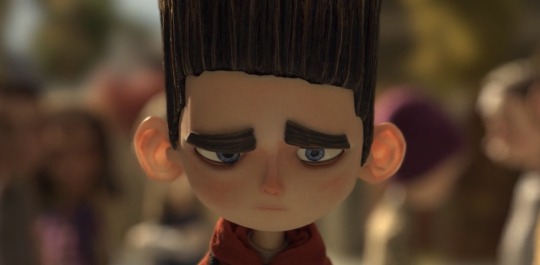
"Once upon a time, long ago, there was a little girl. A - a little girl who was different... Who was different from the other people in her village. She could see and - and do things that no one could understand. And that made them scared of her! She turned away from everyone and became sad and lonely, and had no one to turn to. The more she turned away from people, the more scared they were of her. And they did something terrible! They became so scared that they took her away, and they killed her! And even - and even though she was dead, something in her came back. And this part of her, wouldn't go away even after three hundred years! And the longer it stayed, the less there was of the little girl."
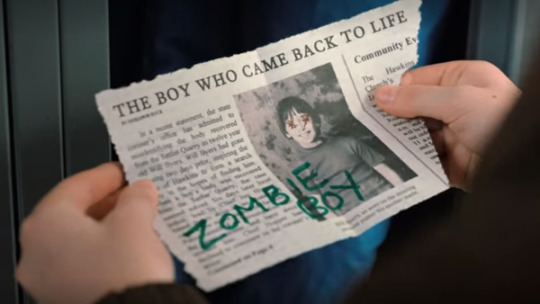

Will and Norman are both associated with zombies. For Norman, this is his obsession with zombies in pop-culture and old horror flicks (also similar to Will's own nerdy interests). For Will, this connection is quite literal as he came back from the dead. They're also both called Freaks. In both medias this is heavily associated with the characters' perceived queerness and their persecution, including the metaphor of their stories, is about homophobic oppression.



Norman and Will develop a psychic connection with the 'villain', who is able to send them into trances where they see visions, and eventually even whisper in their ears when the connection becomes stronger.


The 'villain' part is in quotes because, while they both occupy the role of the antagonist within their stories, the line is not so cut and dry. We learn that both Agatha and Henry were young kids (11 and 12 respectively), who started showing signs of magical powers, which led their conformist societies to be afraid of them.
The Puritan courts sentence Agatha to death on charges of witchcraft, where she curses the seven jurors to die and never find rest. Henry's story proves more complicated.... but you can see the parallel. Paranorman is in a way the kids movie version of the Henry/Will plot in Stranger Things.

Paranorman ends with Norman confronting Witch!Agatha at her grave, where he is able to pull through to the little girl that still exists inside of her and wants to be laid to rest.
It had been tradition up until this point that the people with the 'gift' to see the dead would read her a bedtime story to make her go away for another year, her soul still unrested and in agony. Norman's decision to try and talk to her himself is what broke this 300-year cycle, allowing her to pass on peacefully and saving the town from yearly destruction.
...I think we will see something similar in Season 5 of Stranger Things. I don't think that's too much of an unpopular or an undiscussed opinion at this point in time, so I won't push it too much further. Look up other people's posts on the topic; I'm sure they could articulate much better.
But the specific parallels between these two pieces of media are so stark that I wonder if this was another piece of inspiration and evidence we can add to the pile. Especially with the text: society oppresses people with powers for being different // subtext: society oppresses queer people theme they share in common, and the amount of 80s horror references that exist within Paranorman.
#will byers#henry creel#stranger things#paranorman#st parallels#so many things you see in paranorman that you wouldnt ever see in another kids movie... bless laika studios
46 notes
·
View notes
Text

The Untold Story of Aaliyah
When considering Aaliyah’s track record, it’s befitting that her name means “The highest, most exalted one, the best.”
Her parents, Diane and Michael, decided on the name based on the high hopes and expectations they would have if they had a daughter. Her success as both a recording artist and actress actually makes the name of a self-fulfilling prophecy. Aaliyah made her dreams come true. At 22, she not only had a very successful recording career but also established herself as a motion picture actress and an accomplished business woman.
Born January 1979, Aaliyah Haughton, with her silky smooth voice, signed a record deal with her uncle in Detroit when she was just 12.
Two years later after she was signed, Aaliyah teamed with R&B singer songwriter R. Kelly to make her first record "Age Ain't Nothing But a Number." It was an instant success. The first single, “Back And Forth,” was a Top 5 hit on the Billboard Hot 100 and a No.1 R&B song.
youtube
Billboard Magazine said Aaliyah "revolutionized R&B with her honey-coated voice and sultry mix of pop, soul and hip-hop."
Her signature style of a crop top or bandeau top paired with baggy jeans, with long hair partially covering her left eye, is emblematic of her "sweet but street" style and still emulated today.
Teen Vogue once wrote Aaliyah set the prototype for the young female artist of the ‘90s.
Meanwhile, Aaliyah became involved with Kelly and the two were secretly married when Aaliyah was just 15, in 1994, using falsified documents procured by a member of his inner circle.
R. Kelly and Aaliyah: A look at an illegitimate marriage

In 2019, federal prosecutors charged Kelly with scheming with others to pay for a fake ID for an unnamed female a day before he married Aaliyah.
The revised indictment accused Kelly of paying a bribe in exchange for a "fraudulent identification document" for someone identified only as "Jane Doe" on Aug. 30, 1994.
A day later, Kelly, then 27, married Aaliyah in a secret ceremony he arranged at a hotel in Chicago.
Her parents discovered this and quickly annulled the marriage.
But the scandal tarnished Aaliyah's reputation more than Kelly's. She was portrayed as a teen seductress rather than one of Kelly's first and many victims.
In 2021, a former backup performer for R. Kelly testified that she saw Mr. Kelly engaging in a sex act with the R&B singer Aaliyah around 1993, when Aaliyah was only 13 or 14 years old.
The woman, who testified under only the name Angela, told jurors at Mr. Kelly's criminal trial in Brooklyn that she was performing with Mr. Kelly on tour when she went to visit the singer on his tour bus.
But as she began to open the door, Angela said, she saw Mr. Kelly, who was in his mid-20s at the time, and Aaliyah "in a sexual situation," she told jurors. Aaliyah was seated in a chair, she said, and Mr. Kelly was kneeling and appeared to be performing a sex act on the girl.
Angela "closed the door abruptly," she said, and never spoke with Mr. Kelly about what she saw.

In 2021, at Kelly's trial, during which six accusers, including Angela, have said that Mr. Kelly had sex with them while they were underage, Angela's account stood apart from others: Aaliyah, whom Mr. Kelly married illegally in 1994, is the youngest girl that the singer has been accused of sexually abusing. And Angela became the first accuser to testify that she had seen the two engaged in sexual acts.
Aaliyah, who was one of the most celebrated music stars of the 1990s, has been a significant focus of Mr. Kelly's trial. The marriage of the two singers, using falsified documents when Aaliyah was 15 and Mr. Kelly was 27, prompted the first significant scrutiny of his encounters with underage girls.
Potential sexual crimes that date to the early 1990s would typically be too old to prosecute. But the racketeering charge, which claims that the singer, whose full name is Robert Sylvester Kelly, was the head of a criminal scheme that preyed on women and underage girls for sex, allows the government wider latitude.
R. Kelly sentenced to 30 years in prison for federal racketeering and sex trafficking charges

Angela said she first met Mr. Kelly around 1991, when she was between 14 and 15 years old. The singer began to have sex with her while she was underage and a student in high school, she testified.
On a separate stop in Washington, D.C., during the tour, Angela recalled that she and a group of other girls including Aaliyah were reprimanded for breaking the singer’s instructions. Angela told jurors that they had made a trip to a 7-Eleven convenience store for food, but that Mr. Kelly had told them not to leave their hotel. When he learned of their disobedience, he demanded sex, she said.
“Robert told all of us we would have to put out,” she said. “It was dues time,” she added, explaining to jurors that the singer often presented having sex with him as a form of paying their dues.
As Mr. Kelly’s conduct came under renewed scrutiny at the height of the Me Too movement, both installments of the “Surviving R. Kelly” documentary series delved into the accusations.
“If people would have protected Aaliyah, so many other girls wouldn’t have gotten touched,” a former boyfriend, Damon Dash, said during the second portion of the Lifetime series. “Aaliyah was like the sacrificial lamb for all that.”

"Surviving R. Kelly", the revelatory Lifetime documentary series that has illuminated the star’s myriad horrific sex crimes, grooming, and child abuse, detailed new allegations about the end of Kelly’s unlawful marriage to the then-teenage Aaliyah. According to multiple sources in the docuseries, Aaliyah’s family agreed to an NDA after the annulment with one source saying the family promised not to press charges if Kelly sold the family the rights to his first three albums.
Lifetime series include allegations about members of Kelly’s inner circle allegedly looking the other way at Kelly’s abuse of women, girls and also young men over decades, with Pratt saying that “He [Kelly] couldn’t do this by himself… it’s clear as day there were enablers.” Variety noted that the Aaliyah NDA came up during Kelly’s 2022 New York trial, though it did not receive widespread media coverage at the time; Chicago reporter Jim DeRogatis originally broke the news of the NDA, telling the New York Times Popcast podcast in 2018 that the agreement was a “harrowing document… A non-disclosure agreement on both her part and Kelly’s, vowing not to pursue further legal claims for physical abuse. So, it wasn’t just an underage sexual relationship, he hit her, allegedly, according to that court document.”
In federal court in 2022, a Chicago jury found Kelly guilty of three counts of child pornography and three counts of enticing a minor to engage in sexual activity. Aaliyah was named as Jane Doe No. 1 in that trial. 2022 also saw Kelly sentenced to 30 years in prison in a New York court after being found guilty on all counts in a sex-crimes and racketeering case, which saw testimony from 11 accusers (six of whom were underage when the abuse began).
Aaliyah's Singing and Acting Career: Impact and Legacy

Aaliyah changed the sound of R&B music and was one of the most beloved singers of the ‘90s.
Aaliyah’s sophomore album, “One in a Million,” catapulted her to fame with Timbaland’s innovative production and Missy Elliot’s songwriting. This album showcased Aaliyah’s unique style and her undeniable talent in the music industry.

"One in a Million" went double platinum after its release in 1996, and her third — and final — album, Aaliyah, dropped in 2001 and peaked at No. 2 on Billboard's top 10 list.
Aaliyah’s “Try Again” beat out Britney Spears’ ““Oops!... I Did It Again” video and Christina Aguilera’s “What a Girl Wants” to win best female video at the MTV video awards in 2000, another sign she was poised for super stardom.
In addition to her music career, Aaliyah made a name for herself as an actress, starring in films such as “Romeo Must Die” and “Queen of the Damned.” Her role in “Romeo Must Die” alongside Jet Li showcased her acting prowess and led to the creation of the iconic song “Try Again.” Aaliyah was also set to appear in “The Matrix” sequels before her untimely passing.
Sadly, two months after the debut of her self-titled album, Aaliyah’s life was tragically cut short when she died in a plane crash in the Bahamas after filming her music video “Rock the Boat” on Aug. 25, 2001.
youtube
The Mysterious Death of Aaliyah: What Caused the Tragic Plane Crash?
Still, two decades later, an air of mystery surrounds what went so tragically wrong on Aug. 25, 2001, when an hour-long flight from the beachy shores of the Abaco Islands to Miami claimed the lives of the 22-year-old superstar Aaliyah D. Haughton and eight others. And, while her family and fans were still processing the sudden loss and an investigation into the crash was barely underway, Aaliyah’s death was quickly eclipsed by another tragedy, Sept. 11.
In the years since, there have been few explanations for why the plane was ever allowed off the ground in the first place. Arguments had broken out between Aaliyah’s entourage and the pilot over the plane being overweight. After the crash, it was quickly confirmed that the small twin-engine plane exceeded its maximum weight limit by several hundred pounds. Plus, the weight was not evenly distributed, which would have made the plane harder to control once it got into the air. The last significant update came in 2002, when a toxicology report found that the inexperienced pilot had cocaine and alcohol in his system.
The news adds to a long list of troubling stories implying that neither the pilot nor the plane were fit to fly, leading to lawsuits filed by the singer’s family and the survivors of other passengers on the doomed flight.
The investigation ultimately ruled Aaliyah’s death as an accident, with the coroner concluding that she died from severe burns and a blow to the head. The tragic event serves as a reminder of the importance of adhering to aviation regulations, ensuring the safety and well-being of passengers and crew alike.

In a 2021 book by journalist Kathy Iandoli, the unauthorized biography, Baby Girl: Better Known As Aaliyah (Atria Books, Simon & Schuster), the author describes the tragedy as one that was likely avoidable.
Iandoli also writes that according to a man who was a 13-year-old baggage handler at the time, Aaliyah, who had been resistant to flying that day, complained of a headache and was napping before being given a pill that he could not identify. The handler, named Kingsley Russell, helped deliver her water before she took the pill. She then fell back asleep and was aided onto the plane.
The Wild Conspiracy Theories Surrounding Aaliyah's Death
After Kelly's arrest, conspiracy theories have begun circulating on the Internet, shockingly suggesting that the Aaliyah's death may not have been an accident.
One of these suspicious theories claimed the singer could have met her end thanks to shady figures in the music industry.
Hinting that industry big-wigs may have become worried about her success, and feared that she might use her platform to out her ex husband's alleged actions, they shockingly suggested that her untimely death may have been an effort to silence her.
In 2024, P Diddy’s arrest sparks wild conspiracy theories involving also Beyoncé and Jay-Z in Aaliyah's death.
P Diddy, who collaborated with Kelly on the track Satisfy You in 1999, was arrested on September 16, 2024. Some of the similarities in the cases brought against Sean “Diddy” Combs this week and Robert Sylvester Kelly several years ago are evident at a glance: Both are world famous, powerful and influential musicians who were accused of sex crimes by federal prosecutors in New York City.

But Combs’ case echoes R. Kelly’s in another way: In each, prosecutors relied on a novel use of the Racketeer Influenced and Corrupt Organizations Act, or RICO, to indict them on allegations of using that power and fame to wield the resources, businesses and people who answered to them to commit crimes – and attempt to cover them up.
Moreover, Radar Online reportedly spoke to R. Kelly about the situation back in March 2024 (when federal officers raided Diddy's Los Angeles and Miami homes). "I don’t believe none of this s**t," R. Kelly reportedly said of the Diddy situation. "You could tell me about Puffy, you could tell me about anybody. You could tell me on the news, the weather, the sky is blue, I’m not gonna believe the s**t. 'Cause I’m in it now, and I know what they did." Kelly claimed that authorities are "hunting" him, Puff Daddy, and other celebrities because of the "flagrant" way in which they handled their wealth, success, and capacity for power.
In a shocking twist, the arrest of hip-hop mogul Sean 'Diddy' Combs in New York City has also unleashed a whirlwind of conspiracy theories, linking some of the music industry's biggest powerhouses—Beyoncé and Jay-Z—to a shadowy underworld of criminal activities. The federal investigation into Diddy, centred on alleged sex trafficking, has rekindled long-standing rumours and fan-fueled theories about his connections with the iconic duo.
The most bizarre theory claims that Beyoncé and Jay-Z are somehow connected to the deaths of beloved music icons like Aaliyah, Left Eye, and Michael Jackson. Yes, you read that right—some theorists believe that the couple, along with Diddy, played a role in the untimely deaths of these stars, including Tupac. Well you wanna know why? Because these celebrities were “taken out” for refusing to fall in line with the industry’s so-called secret elite trio.
J. Cole's popular 2013 track "She Knows" has recently gained traction on social media, thanks to a TikTok conspiracy theory involving the deaths of Aaliyah, Lisa Left Eye Lopes and Michael Jackson.
The theory connects Beyoncé to J. Cole's song "She Knows," claiming that the rapper was referencing the singer in the title. The theory speculates that Beyoncé allegedly had knowledge of a supposed plan by Diddy and Jay-Z that resulted in the deaths of Aaliyah, Lisa "Left Eye" Lopes, and Michael Jackson.
Fans have drawn their theories from the lyrics:
"Only bad thing 'bout a star is they burn up / Rest in peace to Aaliyah / Rest in peace to Left Eye / Michael Jackson, I'll see ya / Just as soon as I die."
However, the insinuation that R. Kelly or Sean "Diddy" Combs, Jay-Z, and Beyoncé, were complicit in Aaliyah, MJ, and Left Eye's deaths is not proven by any official evidence.

Sources: The New York Times, Fox 5 New York, Variety, Billboard, People, Entertainment Weekly and Radar Online
#aaliyah#r kelly#age ain’t nothing but a number#Youtube#one in a million#try again#damon dash#p diddy#puff daddy#sean combs#beyonce#jay z#90s#90's#1990's#1990s#2000s#2000's#2024#rock the boat#more than a woman#missy elliott#timbaland#rnb#music#pop#pop culture#90s rnb#90s fashion#african american
6 notes
·
View notes
Text



Left: Guild Master (1-3) Center: Laborer (1-4, 2-2) Right: Young Girl (2-3)
5 notes
·
View notes
Text
MONTGOMERY, Ala. (AP) — A former FBI agent was sentenced to life in prison Thursday for sexually assaulting an 11-year-old girl while serving as an Alabama state trooper.
Alabama's state police hired Christopher Bauer even after he was kicked out of the FBI amid earlier claims he raped a co-worker at knifepoint.
An Associated Press investigation showed Bauer, 45, moved from one law enforcement job to another with the help of a forged letter making it appear he was “eligible for rehire.”
The forgery prompted an FBI investigation but federal authorities held off charging Bauer as the state proceedings played out.
A jury convicted Bauer in June of first-degree sodomy and sexual abuse of a child under 12 following a weeklong trial in which defense attorneys claimed the girl made up the allegations.
Shackled and wearing an orange jail uniform, Bauer told Montgomery Circuit Judge Jimmy Pool that he never imagined he would end up on the prisoner side of a jail cell. He said juries don't always get it right.
“It seems no matter what I say, no one wants to believe I’m innocent,” he told the judge. “All it took was an accusation to strip me of everything.”
The girl’s mother stood with prosecutors, who asked for the maximum sentence. Daryl D. Bailey, the Montgomery County district attorney, called Bauer a “sexual predator” following his conviction, saying he needed to be “removed from our streets forever.”
“He’s a monster,” the girl's mother told the judge. Bauer, she added, used the badge to project the “image of a good person.”
“He had everyone fooled,” she said.
Pool told Bauer as he pronounced the life sentence that he “believed every single word” of the victim's testimony.
Bauer's defense attorneys argued the disgraced lawman deserved leniency following his own abusive childhood in foster homes and orphanages. He was removed from his parents at the age of 5 and later diagnosed with oppositional defiant disorder.
“Several instances stick out to Mr. Bauer, including once when he was pushed out of the third floor of a building and another when he was left in a burning apartment,” his attorneys wrote in a court filing.
Bauer, who was arrested in 2021, faces similar child sex abuse charges outside New Orleans. Louisiana State Police said they intended to extradite him following the Alabama case.
During the Alabama trial, the child — who is now a young teen — testified through tears that she was repeatedly abused by Bauer for years, too scared to say no or to tell anyone what was happening.
Jurors saw a recording of her interview with a child abuse investigator in which she described the same abuse. Law enforcement became involved after the girl eventually told a friend and the friend’s parent alerted the school.
Bauer took the stand in his own defense during the trial, responding “no, never” when asked if he had abused or sodomized the child. “If she said I did something to her, then yes that’s a lie.”
Bauer’s time in the FBI was not discussed in detail at the trial. The judge granted a defense request to exclude statements about allegations by a co-worker in Louisiana that he had raped her at knifepoint.
The FBI has said Bauer forged a letter that scrubbed his record clean and helped clear the way to his hiring by the Alabama state police in 2019. The document, obtained by AP, confirmed his decade of “creditable service” and deemed him “eligible for rehire," but the FBI told AP the letter in question was “not legitimate.”
Alabama authorities have refused to explain how Bauer's earlier misconduct was overlooked. AP’s investigation found he omitted his ouster from the FBI on his application to the state police, including that he had been suspended without pay and stripped of his security clearance in 2018 amid a string of sexual misconduct allegations he faced working in the FBI’s New Orleans office.
Many of the allegations played out in Louisiana court filings that had been public for a year when Bauer was hired in Alabama. The woman who accused him of rape, a co-worker at the FBI, wrote in an application for a restraining order that Bauer had choked her and made her “scared for my life.”
Bauer disputed those claims, telling colleagues the acts were consensual. But the woman previously told AP that Bauer sexually assaulted her so frequently her hair began to fall out.
“It was a year of torture,” she said. “He quite literally would keep me awake for days. I couldn’t eat. I couldn’t sleep, and in six months I went from 150 pounds to 92 pounds. I was physically dying from what he was doing to me.”
The Alabama Law Enforcement Agency did not immediately respond to a request for comment on Bauer's sentence. The agency has refused to release records from its internal investigation into Bauer's hiring, with a spokeswoman saying only “there were no disciplinary actions taken as a result of the review.”
2 notes
·
View notes
Text
Husband Dismembers Wife on Anniversary Trip
truthfully.com
Husband Dismembers Wife on Anniversary Trip
By Jennifer A. • Jan 22, 2025

In October 2021, Emily Jean Schwarz and her husband Joseph Ferlazzo embarked on what should have been a celebratory trip to Vermont's Green Mountains for their first wedding anniversary. Days later, Joseph returned home without Emily, spinning a tale that would unravel into one of the most gruesome crimes Vermont has seen in years.
A Husband's Story Begins to Crack
Joseph, then 41, told Emily's family that an argument had erupted during their trip. He claimed Emily stormed off near Route 2 by the Bolton Valley Resort Access Road and disappeared. Concerned family members reported her missing, and Vermont authorities launched an investigation. From the outset, Emily's loved ones harbored doubts. Prudy Schwarz, Emily's stepmother, told Vermont Fox affiliate WFFF, "Something didn't click the first time we met him," as reported by the New Hampshire Union Leader. "I said it's something with his eyes; he looks evil in his eyes."
Police scoured the area for any sign of the 22-year-old aspiring singer, but nothing turned up. As the search intensified, suspicion fell on Joseph. Four days after Emily's disappearance, police located him at a convenience store in St. Albans, Vermont. The story he told investigators began to shift, and then it shattered entirely.
A Chilling Confession
Confronted with evidence and growing scrutiny, Joseph confessed to a shocking crime. According to Vermont State Police, he said he and Emily did fight, as he originally said — but then he admitted to shooting Emily twice in the head inside their camper. Hours later, he dismembered her body with a hand saw, placing her remains in black trash bags that he stored in the camper's bathroom.
Investigators obtained a search warrant for the couple's converted minibus, where they found eight black plastic bags containing Emily's remains. They also recovered the saw Joseph had used, according to court records.
Gruesome Details Emerge in Court
During his trial, Joseph claimed self-defense, telling jurors that Emily had physically attacked him during an argument. He testified that he had no recollection of much of the crime, stating, "I have one flash of memory where I cut into her leg with a knife. It made me sick," as reported by PEOPLE. Prosecutors, however, presented a different narrative: a calculated act of violence followed by meticulous attempts to cover his tracks.
Chittenden County State's Attorney Sarah George told jurors that Joseph's story didn't align with the evidence. His actions — bringing Emily's body into the camper's shower, dismembering her, and methodically storing her remains — indicated premeditation, not a panicked response to a threat.
Justice for Emily
After five days of testimony and two days of deliberation, the jury found Joseph guilty of first-degree murder. "The verdict couldn't be any better. The only thing that could make it better would be to have my daughter back in my arms and alive," Emily's mother, Adrienne Bass, told NBC 5. "For me it was really just relief and feeling like we got the justice that Emily deserves."
Emily's family continues to grapple with the loss of a young woman they remembered as vibrant and determined. Her obituary, as reported by PEOPLE, described her as a "beautiful, aspiring singer" who dreamed of helping others as a cosmetologist. Emily's stepmother told WFFF, "She was the girl that ran around in polka dot pants and a striped shirt, dancing," as reported by the New Hampshire Union Leader.
A Legacy of Loss
Joseph Ferlazzo will face sentencing in February 2025, bringing legal closure to a case that has devastated Emily's loved ones. Her family has vowed to keep her memory alive, even as they mourn the dreams she'll never realize. For those who knew and loved Emily, justice offers some solace, but the wounds left by her tragic death will never fully heal.
References: Man Convicted of Dismembering Wife During Anniversary Trip, Leaving Remains in Camper Bathroom | Jury finds NH man guilty of murdering wife during anniversary trip to Vermont | Jury finds Joseph Ferlazzo guilty of first degree murder
0 notes
Text
1. Short Peg Bundy
2. Great listener (with big tits)
3. Great listener (with big ass)
4. Corn-fed Xena
5. Butcheress
6. Tatted-up cheese monger
7. Classically hot (die first in a horror movie)
8. Mysteriously hot (die last in a horror movie)
9. Sequestered juror
10. Pilot
11. Uber driver
12. Uber pool driver
13. Susan Saran-dom
14. Tár
15. Old Cara delevingne
16. Q.L.C. (quarter life crisis)
17. Fencer (sport)
18. Fencer (fences)
19. Incorrectly sorted hufflepuff
20. Pre-Friends Courtney cox type
21. During-Friends Courtney cox type
22. Post-Friends Courtney cox type
23. Femme Mr. Peanut
24. A "Mary Louise" (the most common first and middle name in US)
25. Real life Cathy
26. Middle aged rumspringa-er
27. Janice Muppet
28. Sexy bird
29. Ghost tour lover
30. Marge Simpson
31. Reclusive sculptor
32. Insatiable Eleanor Roosevelt
33. Cynical stripper
34. Adjunct professor
35. Tenured professor
36. Gorton's fisherwoman
37. Young Blanche Devereaux
38. Congresswoman
39. Female Popeye
40. Vegan bbq chef
41. Cute Howdy Doody doll
42. Twin
43. Ginger
44. Fanfiction author
45. Rolfer
46. Deep sea diver
47. One woman show woman
48. Lumberjackess
49. Disney cast member
50. Liberal doomsday prepper
51. Weed gardener
52. Gay's anatomy (a surgeon)
53. A.L.F. (aunt I'd like to fuck)
54. Former reality show contestant
55. Seinfeld if he was a girl
56. A Helen-type
57. Late afternoon owl
58. Head coach
59. Pre-Friends Lisa Kudrow type
60. Upstate homeowner
61. Season ending acl injury
62. Dawn lookalike
63. Summer lookalike
64. Wickie lookalike
65. Beautiful indy car driver
66. Exhausted community organizer
67. Bisexual tricyclist
68. Cynical wedding planner
69. Rockette
70. "Stomp"er
71. The giver
72. Former cult member
73. Opposite myers-briggs type
74. Female HBO's Barry
75. Hamburglartrix
76. Catfish
77. Sweet'n low mommy
78. Just broke off engagement
79. AirBnBitch
80. White Lotus 2 Sicily GM type
81. Humiliated American Idol auditioner
82. Podcaster with vocal fry
83. Podcaster no vocal fry
84. Reformed goth
85. Public radio celeb
86. Crossing guard who's gone viral for dancing on the job
87. Indiscernible accent
88. Neighborhood famous realtor
89. A Siri or Alexa type
90. Hiked the Appalachian trail in winter
91. Civil War reenactor (for the good guys)
92. Revolutionary war reenactor (for the bad guys)
93. Dungenmistress
94. Brewmistress
95. Former "The Onion" writer
96. Cosplayer
97. Endurance artist
98. Fishmonger
99. Wanted woman
100. Little miss bossy
101. Little miss scatterbrain
102. Parade size girl
103. Top Chef runner up
104. Joe Rogan defender
105. Night shift baker
106. Magicians assistant (top half)
107. Magicians assistant (bottom half)
108. Mona lisa
109. Organ donor
110. Wikipedia donor
111. Method actor
112. Essential workers (hospitals)
113. Essential workers (restaurants)
114. Mixologistress
115. TSA worker
116. Catholic school teacher
117. Midwestern billboard celebrity
118. Intellectual property lawyer
119. THC farmer
120. Jacked stand up
121. Astrology gay
122. Electrical scooter as identity
123. Best friend is brother
124. Soft faced farmer
125. Correction officer
126. Tatted up chef
127. Trader Joe's cashier who loves life
128. Trauma nurse by day/strip club bartender by night
129. Strip club bartender by day/trauma nurse by night
130. Etsy girlboss
131. Septum piercer
132. True crime podcaster
133. Mrs. Clause type
134. Weirdo who chose to live in Vegas
135. Probiotic proselytizer
136. Vegan
137. Vegetarian
138. Pescatarian
139. Pescatarian who will eat meat at dinner parties if it's served to them because they don't want to make a bid deal about it
140. Liver queen
141. Earthquake survivor (all they talk about)
142. Earthquake survivor (won't talk about it)
143. Vet (animals)
144. Vet (war)
145. Fiscal conservative
146. Community college Rachel Maddow
147. Pedra Pascal
148. Shit-stirrer at work
149. Bird watcher
150. Bird stalker
151. A daddy-mommy
152. Hobbist
153. Pete Davidson ex
154. Stephen Dorff but a girl
155. Uncanny valley face
156. Johnny paycheck type
157. Former MTV VJ
158. Butterfeet
159. All about her family
160. Disney adult
161. Marvel mommy
162. Les Misérables les
163. Militant activist
164. Slutty couponer
165. Burning ma'am
166. Divorced yogi
167. Ozempic journey tiktoker
168. Jeweler with a heart of gold
169. Only gay when she drinks
170. Celebrity stylist (will gossip)
171. Large Marge trucker
172. McMansion realtor
173. Bernie Sis
174. Lady glory hole hookup
175. Hotel lobby bar transient
176. Docent
177. Lil Stinktress
178. The elusive cigar mommy
617 notes
·
View notes
Text
R. Kelly’s 30-year sentence was the end of a long downfall for the former superstar.
June 29, 2022Updated 5:25 p.m. ET

R. Kelly, the former R&B singer who had long escaped criminal penalties despite decades of sexual misconduct allegations, was sentenced to 30 years in prison Wednesday for sex trafficking and racketeering.
The sentencing in Brooklyn marks the culmination of a stunning downfall for Mr. Kelly, 55, from a superstar hitmaker who was known as the king of R&B, to a shunned artist whose musical legacy has become inextricable from his abuses.
The chart-topping artist was among the most successful American musicians in the 1990s and 2000s, known for hits like “I Believe I Can Fly.” But as his public image soared, he exploited his vast access to young fans and aspiring artists at concerts, luring them into sex with little regard for their age.
The multiplatinum singer was found guilty on nine counts of racketeering and other crimes in September, after his federal trial in New York shed light on how he used enablers and sycophants to ensnare fans and aspiring artists while controlling their lives.
The case was widely seen as a crucial milestone for the #MeToo movement, representing the first high-profile trial since the national reckoning around sexual misconduct to feature a powerful man whose victims were primarily Black women.
Before the sentence was read, Judge Donnelly listened to several accusers deliver vivid victim impact statements, detailing the ways their lives were marred by the singer.
The accounts added to the trial testimony of 11 accusers — nine women and two men — who often told jurors that Mr. Kelly had inflicted severe sexual, physical and emotional abuse. Several testified that they were minors when he first had sex with them.
Mr. Kelly’s lawyer, Jennifer Bonjean, had argued that the government’s understanding of the appropriate sentencing range was flawed — and asked for a sentence of under 10 years. But Judge Donnelly ultimately agreed with prosecutors, who asked for a term “in excess of 25 years.”
Federal prosecutors wrote in their sentencing letter that Mr. Kelly has shown no remorse and for decades “exhibited a callous disregard” for the effects of his abuse on victims. His actions seemed to have been “fueled by narcissism and a belief that his musical talent absolved him of any need to conform his conduct” to the law, they wrote in their argument for his sentence.
“He committed these crimes using his fame and stardom as both a shield, which prevented close scrutiny or condemnation of his actions,” prosecutors wrote. “And a sword, which gave him access to wealth and a network of enablers to facilitate his crimes, and an adoring fan base from which to cull his victims.”
Mr. Kelly, whose full name is Robert Sylvester Kelly, was first accused of having sex with underage girls in the 1990s, and his illegal marriage to the singer Aaliyah in 1994, who was 15 at the time, prompted questions about his behavior. A few years later, in 2002, Mr. Kelly was indicted on child pornography charges, but was acquitted in 2008 at a trial in Chicago.
It was not until the #MeToo movement renewed scrutiny of his conduct that a new wave of charges arrived — and a conviction finally stuck in New York.
In her sentencing letter, which was unsealed on Tuesday, Ms. Bonjean, Mr. Kelly’s lawyer, told the judge that prosecutors portrayed her client “as a one-dimensional villain, undeserving of any measure of humanity or dignity” and that “there is far more to the picture.”
She said that his “traumatic childhood,” which includes “severe history of sexual abuse” by relatives and others, warrants a lenient sentence. Mr. Kelly said in a 2016 interview with GQ that he was sexually abused while growing up.
“He is not an evil monster but a complex (unquestionably flawed) human-being who faced overwhelming challenges in childhood that shaped his adult life,” Ms. Bonjean wrote.
At trial, Mr. Kelly’s lawyers sought to frame his accusers as obsessive fans and opportunists who sought financial gain. But the jury ultimately believed the prosecution.
“The defendant’s victims aren’t groupies or gold diggers. They’re human beings,” Nadia Shihata, an assistant U.S. attorney, said at the end of the trial. “Daughters, sisters, some are now mothers. And their lives matter.”
Sent from my iPhone
1 note
·
View note
Text
Dawn Ravenell, 13 (USA 1985)

Dawndalea Ravenell, who went by Dawn, most likely would have had a bright future. She was a 13-year-old musical prodigy on the honor roll at school. She loved to sing —especially gospel music— and sang with her school’s glee club. Her parents were the pastor and minister at their church and had a family singing group. With her love of music, Dawn was the lead singer. She had parents who loved her dearly and was very close to her family. She had 3 biological siblings and 2 adopted siblings. The family of 8 was very happy together. Dawn’s mother remembers that Dawn would help with the cleaning and helped take care of her younger siblings.
Up until her death, the only real issue between Dawn and her parents was her relationship with her steady boyfriend for the last part of her life. He was 15 years old. Mrs. Ravenell was concerned about their relationship, which seemed more serious than she would expect from a couple at that age, but Dawn thought her mother was being old-fashioned. Eventually, her parents dropped the subject because there didn’t seem to be any problems with the two teenagers.
But when she was in 8th grade, Dawn got pregnant. She was too embarrassed to tell her parents, so she turned to a school counselor. Under New York laws, the counselor was not even allowed to give a student an over-the-counter pain medication without written permission from their parents, but it was legal for the counselor to secretly arrange for a 13-year-old girl to have an abortion.
Dawn was 21 weeks pregnant when she and her boyfriend took the subway to an abortion facility called Eastern Women’s Center (EWC also killed Dawn Mack and Venus Ortiz). The young couple didn’t know the danger Dawn was in and did not have informed consent for the risks. They were two minors alone in New York City, their parents didn’t even know where they were and Dawn was about to have an invasive operation.
Dawn’s boyfriend used a relative’s credit card to pay the hundreds of dollars to the abortion facility. Apparently nobody cared that a teenage boy was using someone else’s credit card to pay for an operation. Even though Dawn was terrified, the abortionist inserted laminaria dilators and told the children to return the next day. When they did, the abortion facility didn’t bother to record her weight or age. Despite the fact that Dawn was 13 years old, they made her sign a consent form to be put under general anesthesia and have a second-trimester abortion. Dawn was also not told in advance not to eat or drink, which is crucial for anyone about to be put under general anesthesia. As attorney Thomas Principe suing for Dawn's estate, later told the jurors, "This child was just another piece (of meat) on the assembly line."
Dawn’s abortion began at 1:10. She was given only half of the anesthesia needed for a 10 to 15 minute operation. Only 5 to 7 minutes after the abortion started, Dawn woke up on the operating table.
The poor girl was terrified. Because she was not given any instructions on what to do before the anesthesia, her stomach was full. She choked on her own vomit, which aspirated into her lungs. The abortionists quickly gave her a higher dose of anesthesia and shoved a 75 cent plastic tube down her throat. It would later be discovered that body parts from Dawn’s baby were left inside of her after the abortion.
At 1:25, Dawn was placed in a recovery room and left completely unattended. Nobody even bothered to remove the plastic tube from her throat.
Soon, Dawn woke up again. She was once again left choking and gagging on the plastic in her throat and the stomach acid in her lungs. This time there was nobody there. The terrified 13-year-old choked on her own vomit, literally drowning in it. In the process, she suffered cardiac arrest and extreme brain damage from oxygen deprivation.
Eventually, a nurse noticed what was going on and called 911. It was much too late.
Dawn was rushed to the hospital and put on a respirator. Then she was transferred to St. Luke's Hospital, which contacted her family.
Dawn’s parents were never even told that she was pregnant until the hospital called them and told them that Dawn was in the ICU. The family rushed to see her. At St. Luke's they encountered Dawn's boyfriend, who was scarred for life and sobbing uncontrollably. The traumatized 15-year-old had not had any warning that Dawn could be killed.
Even though Dawn was placed on a respirator, it was too late to save her. She was brain-dead. After 18 days without the slightest response or brain activity, she was removed from her life support.
Her heartbroken family sued for Dawn’s painful death. The trial was painful for the Ravenells. One of the more horrible bits of trial testimony occurred when a lawyer cross-examining Klein(one of the abortionists), asked whether Dawn's age bothered the abortionist. Klein callously replied, "Oh, no. I've done 13-year olds before. When they're 10, maybe I'll notice."
Although the Ravenell family originally asked for a verdict in the amount of $1,000,000 against defendants Klein and Augente (the two abortionists who killed Dawn and her baby), the jury declared Dawn's death "an abomination," and returned a verdict of $1,225,000. Klein was held liable for 20% of the award and Augente for 80%. The jury award was also the highest amount ever won in the state of New York for a wrongful-death abortion case, eclipsing the previous record by more than a half million dollars.
Unfortunately, the trial judge felt the amount was excessive and reduced the award to just $400,000, which the bereaved parents decided to accept instead of enduring another trial. Unlike the abortion clinic itself, Klein and Augente both carried malpractice insurance and their insurers paid the damages.
Dawn Ravenell was killed by an abortion done without her parent’s knowledge or consent. Parental consent laws and restrictions on abortion could have saved this bright young singer from an excruciating death choking on her own vomit.


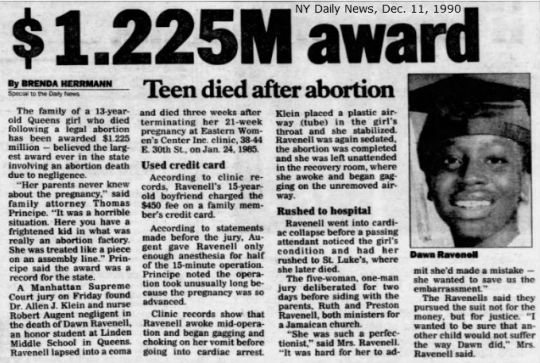
#tw abortion#tw child murder#tw ab*rtion#tw murder#pro life#pro choice#abortion#abortion debate#unsafe yet legal#black lives matter#tw death#unsafe but legal
18 notes
·
View notes
Photo



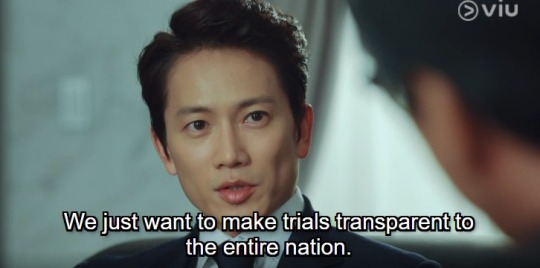

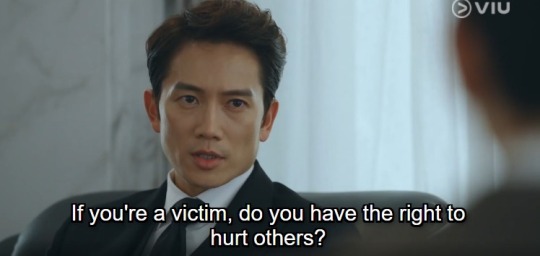


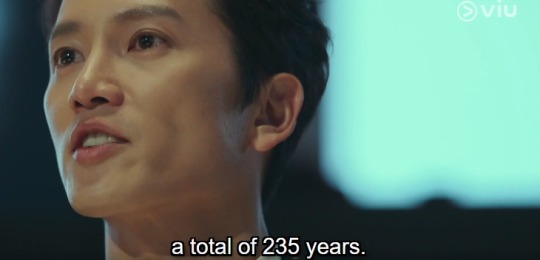

An uprising that created a dystopian Seoul gave birth to a monstrous judge and a live court trial setting.
The Devil Judge episode 1; A Monster Emerges
Episode 1 of The Devil Judge begins in a dystopian Seoul with chaos everywhere in the streets. There’s a unknown plague covering the entire country that made companies fallen and people homeless. The chaos which made the poor lead an arson and acts of terrorism. This created the Gwanghwamun riot and the Social Responsibility Foundation has send out a press conference.
The virus that created the monster
President Heo says a powerful speech. The economic troubles are part of the past. The plague will be forgotten as it’s been resolved by the government. While President Heo speaks this event, the important guests are being introduced: Seo Jeong Hak who is the Chairman of Social Responsibility Foundation, Cha Kyung Hee (Minister Of Justice), Min Yong Shik (Minbo Group Chairman) and Park Duman (Saram Media Chairman). The president also promises to create more jobs and to bring back Korea to the grand country as it was before. We also see on the screen how donations kept on rolling and another character was introduced. Jung Sun Ah (Executive Director of CSR Foundation) commented how the President overreacts whenever a camera is on his face. They know that he’s a clown and the attitude never goes away.
The president adds, they must rectify their law and order. He has passed a bill for a powerful judicial reform which allows the public to participate as jurors. Im not sure if that is such a good idea. Here comes Kang Yohan who is being introduced by the President as a ruthless judge. Judge Kang will preside over the trials and hands out sentences in a live television setting. Here comes the judge who exudes with much charisma and suave. Alot of concerned questions were raised like how the live broadcast is a anti-humanitarian act and it’s only for show. Another comment was mentioned that Judge Kang punishes too severely and are inconsiderate of the weak. Judge Kang interrupts and asks “Who’s weak?”. The journalist made a sample of the disadvantage but he retaliates that they are still the defendants. He mentions that he doesnt care if there’s a powerful person or not. Another journalist asked if he can hand down a hefty sentence on a defendant for the live show. A sample was made with Chairman Joo Il Do, who is known for being well connected. He then makes a statement saying “I am power!” and how he exercises the judicial power that was delegate to him and who is above him (the public). He then ends his speech which made many people impressed especially the President and the Minister of Justice. After the speech, Sun Ah congratulates him for the sexy power he has and the rest of the influential people stares at him.
Kim Gaon
We see another character who Kim Gaon using a public transportation watching the speech of Kang Yohan about to go to The Supreme Court. He then enters the office of Chief Justice Min Jungho who is apparently his former Professor. Gaon and Jungho discusses the live program which made Gaon question Yohan and his intentions. Jungho describes Yohan as no ordinary judge. He is a revolutionist who will eradicate court corruption. He is the nation’s only hope.This made Gaon realize that Yohan is extremely popular. As the riots dies down Jungho compares Yohan as a monster that emerges from turbulent times due to the absurb bills he keeps on passing. Yohan doesnt thinks more of a politician, politician for the people. Gaon realizes how Chief Jungho has a dislike with Yohan and asks why he wants him to be part of the live show. Jungho wants Gaon to observe Yohan and compares himself to Judas.
Gaon and Yohan finally meets at Yohan’s office. When Gaon left, Yohan opened his personal information file with a picture of his parents an a article title “We Just Wanted To Do A Good Deed”, “Conned Restaurant Owner Couple Kills Themselves”. He makes a comment on how he looks just like the father. I wonder if Yohan has met the parents before and if he has anything to do with them being dead.
Gaon enters to his office and we’re introduced with Oh Jinjoo (Associate Judge). They both introduced themselves and Jinjoo made a comment about Gaon’s smile. She mentions how he looks good when he smiles and realizes that there’s a criteria on picking judges base on their visuals. Being charming enough creates power.
Bus incident
As Gaon leaves, we see a group of young students crossing with their teacher. There’s also a incoming bus that is speeding and out of control and is about to enter the Supreme Court entrance. This prompts Gaon to be alert as he sees a young girl about to get hit and covers to protect her. While he does, Yohan was seen shooting the bus driver which made the bus topple. The bus is about to explode with the driver still in it. Gaon continues to be a good citizen and saves the driver on time. There’s a news coverage with the important members of the live show watching. The coverage mentions a arrest warrant for the chairman of JU Chemical Joo Il Do (who was at the presscon) was suspended and the kindergarten driver is connected as a act of protest. The Ministry of Justice says to the President that its a challenge to the authority but SongA responses and says its a outcry. CEO Joo created an incident leak of toxic waste water. Another comment was raised that the many of the public are still out of work and the government can’t collect taxes. If they dont solve this, another revolt would break out. They move on to the live show and asked the Saram Media Chairman how the process is doing. The president mentions that Yohan wanted to do this case personally and makes sure that it goes well.
Gaon sees Yohan leaving and thanks him for saving his life but comments on how Yohan didnt hesitate to shoot. He asked Yohan if he was going to kill the bus driver and Yohan answers back to Gaon with a response like “If i had to?!”. Gaon unsure with his intentions, Yohan counteracts and says if he didnt do anything the bus wouldve continued to spiraled straight. Gaon says that Yohan doesnt care if the bus driver dies or not and makes a calculation stating saving 2 is better than 1.
1st case preparation
There’s a meeting discussing what case they’ll do for the first live show. Yohan wants to take on the JU Chemical case as his first states that it’s a appropriate case and is confident that he’ll go by the law. Yohan makes it clear that its not the people’s court and just wants to make the trials transparent.
Chairman Joo and his lawyer discusses before the first trial. They talk about how hard it is to get clear evidence related to environmental issues. Since itll be difficult to find evidence they’ll plead not guilty. If things turned not well, the judge will charge them with professional negligence resulting death which will lead to 5 years imprisonment. Chairman Joo asks if he can trust the lawyer and says that he will.
Gaon and Jungho talks privately. Jungho asks why Yohan wants the toxic waste case to be his first. Gaon answers the obvious. Jungho also added that Chairman Joo is the biggest donator of the Social Responsibility Foundation. The reason why Yohan is there is because of the Foundation and the Ministry of Justice being his back support. Jungho thinks he has a ulterior motive, despite being in a awkward situation and yet still took the case. Ji Yoonsik and Yohan discusses the bus incident. Ji tells Yohan that he doesnt want to create a scandal and thinks the incident is carelessness but Yohan mentions that its noise marketing (since the incident is related to Chairman Joo). I assume that Yohan only cares for his status and following the law without caring how it affects others.
Gaon makes a comment that the 3 year old is a daughter of the bus driver is part of one of the many deceased related to the JU Chemical Case. The grandmother committed suicide over the case. Gaon internally looks frustrated after Yohan looks like he doesnt care. He says that Yohan rejected Chairman Joo’s warrant and yet want to incarcerate the bus driver. Yohan mentions that the bus driver was caught on the scene but Gaon talks back and says that they must take the motive into consideration. Yohan says that despite being a victim, does this give them a right to hurt others? Well you have to agree with Yohan on that one though. Gaon then mentions that the bus driver is injured and Yohan says that they have a medical detention center so the issue is solved which lead Gaon to become quiet. Do you think Gaon is putting his emotions over the law?
A news report about the incident broke out that the child named Yu died from the toxic waste water leakage incident of JU Chemical. The grandmother of the child committed suicide. The result of the incident led 11 dead, the rest of the alive victims are receiving treatment.
Gaon and Jungho ate out. Gaon made a private investigation on Cha Kyunghee. During the time Chairman Joo caused trouble as a startup business, Ms. Cha was the person who helped him as a elite Seoul prosecutor. To return the favor when Cha became a assembly woman Chairman Joo is the head of her campaign club. Jungho made a assumption that theyre both helping each other and since Yohan was forced to be part of it, he still wanted to put Joo on a trial. Cha is watching on the sidelines with no objection. What do you think are the intentions of Cha and Joo? It’s not for the good right? Its all speculations for now. They compared the scenario as someone’s first love. Gaon continues to spy on Yohan to find more evidence and puts in spy devices around his office. Yohan almost caught him as he entered the office. Gaon continues to spy and spots Chairman Joo’s lawyer about to enter a restaurant meeting Kang Yohan. Gaon and Jungho meets up after discussing the scenes which makes them even more suspicious over Yohan. They just need to watch him closely at court.
Gaon’s childhood
As Gaon comes home, we are introduced to Soohyun who is a RIT Lietenant who is a childhood friend of his. Soohyun compares the 2 of them and says how the public loves judges with different backgrounds. We learned that Gaon doesnt want to move out as the place reminds him of his parents. Gaon and Soohyun continues to joke around, Soohyun mentions that she has a crush on him but he had rejected her. Gaon didnt want to lose his only best friend.
While Soohyun was doing her rounds, Soohyun hears a woman screaming for help. A highschool student was being attacked on the streets and saves her. This makes Soohyun becoming a likeable character. Ironically a poster above with the caption “A safe Korea will be realized from now on.”. Not so safe yet isnt it?
Ms Jung and Ministry Of Justice meeting
Ms Jung starts the discussion stating that the sponsors are becoming worried with the upcoming trial. The reason why theyre holding the mock trial is to ease the citizen’s anger over criminals. Suspicious to why they put a businessman on trial and if he receives a serious punishment, itll become a negative precedent for the business people. Cha says a rhetorical question if Yohan has ever made a mistake, but he hasnt. Song still adamant and wants the case to be a lighter trial. Asks why Cha is adamant about this being the first case and also mentions that Ms Song has overstepped by being arrogant. Before Jung leaves she commented on how everything from the office to her expensive car was paid by her foundation. Damn, straight fire. I like her. She also adds statistics information that the Ministry of Justice lacks budget and added that her foundation should create more prisons themselves. OMG
The First Live Trial
Before the trial begins, Yohan begins to be reminded of his past with a shadow that looked like Gaon surrounded with fire.
How to watch the trial?
Install the DIKE app, tap the statue and you’re in! While watching the trial 2 buttons will appear: Red button - To be punished and otherwise they can tap the other button. Votes will be collected and visualized in court. The judge will be able to see the people’s opinions and decide easily.
The court case is about a chemical company who caused sewage leak and didnt do any treatment. The water was used by the residents for their daily lives.
Yohan comes a conclusion and decides that there was intent murder. Five years is the maximum. As mentioned during the beginning of the episode, Yohan became a monstrous judge by passing insane bills. One of the bills is about the number of years accumulated for the sentences, based on the victims. To make it more dramatic since its a live tv show, he lowered down the blinds and lights mentioning all the names of the victims. He also mentions that there were 11 dead and 36 disabilities. The case resulted from 5 to 235 years of imprisonment, which equates to a life sentence. Ministry Of Justice watching from behind the tv looked in shock. While Yohan mentions the names the President continues to watches and compliments how Yohan is a true master.
The trial resulted to professional negligence and 235 years of imprisonment. The ratings also were soaring high and the Ministry of Justice is pissed while the President smirks. Yohan speaks to Chairman Joo and wishes him a long life..
HAH.
The live trial ends and a victim’s relative thanks Judge Yohan. While the victim’s relative was crying and hugging Yohan, Yohan was seen yawning as if he was bored. Gaon saw it and continued to stare at him. Yohan stared back acting like a devil. We see a flashback of Yohan handing out a USB and mentions that there will be a flash of the victim’s pictures will be put out during the show. Yohan then smirks at Gaon. The scene fades with Yohan standing facing off with Gaon. A flashback of his tragic past shows him and a look-a-like Gaon (Yohan’s brother or a former colleague maybe) facing each other surrounded by which looks like a burnt old church. They both continued to stare at each other as the scene concludes. It looks like there’s a past which needs to be disclosed.
--
Comments:
+ Good acting (Ji Sung, Kim Minjung, Jang Youngnam)
+ Live trial setting
+ Buildups of the faceoffs: Yohan vs Gaon / Ms Jung vs Ms Cha
+ Buildups of the 1st case
+ Good suspenseful bgm
+Script looks full and engaging
- Dystopian setting looks poor production wise but is made up by the + cinematography
+/- Needs a 2nd rewatch for the pilot incase you miss something out
7/10 so far for the pilot. I look forward for the rivalries and the upcoming cases.
8 notes
·
View notes
Text
I suppose I won’t take a break. I want to get done with it. I suspected it might have been Olive... At least they didn’t make her turn out to be horrible... The end of the case was still bittersweet. I love dark chocolate, but still... I cried physical tears about that part of the story and they had to go and ruin it!
I really want cases to end on satisfying notes. The only one so far out of both was Gina’s case. Rei’s was alright, but there’s still the unsolved mystery and the fact that no one who knows anything is willing to trust us with the info... This is going to get long in the tooth...
I’m also a bit upset about something else. I’m docking imaginary points any time the game unnecessarily reuses characters. They made the Great Ace Attorney so they would have a whole new world or setting to work with... what have they done so far?
You have so much potential, but you reuse so many of the characters and gimmicks. (Like summation exams every half hour) It’s like its own little pocket instead of a whole new world.
Let’s see, new characters in GAA 2, not counting anyone who so much as showed their face in the first one, one way or another. Who do we have?
Rei Membami- Lovely girl, took a few bites out of Maya. She’s really just a Maya clone though. Maybe an afterthought because the developers realized that Susato wasn’t “Maya” enough. Which, Susato < Maya, sooo yeah. (Not saying I don’t like Susato in her own way. But I’m head over heals for Maya for reasons.)
She so wants Susato now that she’s seen her cross-dressing though, and I am in full support.
Menimemo - Another racist name, good job. Claims he attempted murder for justice, but didn’t actually kill. Passes it off on a sixteen-year-old girl, but pretends it would have been far less heroic for her to do it. When it’s pointed out he’s just as bad as the murderer he killed, he just says, “I guess.” Yeah, he definitely believes that (not).
Mrs Altamont - Gorgeous and fairly reasonable as a juror, honestly. I love her queen bee motif and really she could be my queen. Ahem, moving on.
Duncan Ross - Really sad to have died so young. He was about to start his career and his marriage. Honestly, if I meet the love of my life now after waiting for so long (about fifteen years I suppose) and lose them just like that... I probably WOULD go out like Olive wanted to. Taking their killer down with me.
Selden - Pretty much like Cece Yew or Deid Mann. One of those characters you forget about not long after because the writers practically did too. Okay, next....
Oh, is that it? Brand new setting, you can use all the new characters you want, no obligations to reuse any, and in the first two cases, you use 5 new characters? Two of which barely count because they’re already dead and have very little characterization. Really, AA franchise, I thought you could do better.
Seems like they try to make up for it by having like 75 percent of them be loony toons. I get it, AA has eccentric characters, it’s like their seal of authenticity. But they still need normies to make the wackos stand out! Like all the rest of AA did!
Like, every other character not only is at least a little eccentric, but they practically have to LIVE that silliness 24/7 in this game! Painters have to paint on the stand (I really thought there would be some purpose, like a reveal of her painting), actors have to prance, dance and quote like that’s the only thing that matters, like lunatics! If your job is radio transmissions you do that constantly, you can’t even take a day to, IDK, pay attention on a jury!!! The doctor has to come to court still wearing the gloves from his latest operation, and might I add, not hear half of the GD trial! The list just goes on and on!
Honestly, I really just want them to go back to Phoenix. I really hope they haven’t abandoned him and all the lose ends they left behind, five years ago at this point. And wasn’t it the original creator, Shu Takumi who made GAA? After not working on it since Trials and Tribulations? I have no idea how he worked on Spirit of Justice slightly after the first GAA, getting SoJ right, but GAA wrong. I know a lot of people hate SoJ, as well as DD, but I love them. The people who say that are probably like the gen wunners of the series.
Either way, I don’t know what to think. Just as long as none of the bad elements make it from GAA to the main series. I guess he wanted to try something new with it. Honestly, the music makes it feel like Prof Layton, but with all the charm of Mystery Journey. Maybe he liked what he saw in PLvsAA. I don’t know what it is, but they just can’t make the story work. Not even for individual cases. Aside from a handful of good things (*AHEM* Iris, Gina, Holmes) I’ve been thoroughly let down with this side series. It doesn’t look like there’s going to be a third and I’m actually glad.
Now where the heck is AA7? It’s been five years! I think we all want Apollo and Trucy to find out they’re related already! I mean, it was mentioned at the end! You can’t not finish that!
2 notes
·
View notes
Text
2019 Kdrama Year in Review
Alright, with 2019 drawing to a close, I thought it would be good to kind of organize my year in watching kdramas (ft. some cdramas). As per usual, I probably started around 100, dropped around 75% in the middle, and finished maybe like 10. My attention span is not good, but hey, I did watch a ton of great dramas this year and made some amazing discoveries. Let’s take a look! (and please keep in mind the top 5s are in no particular order!)
Dramas started: 96 (this encompasses ALL the ones I’ve started, mostly kdramas, but some cdramas, a jdrama or two, a couple thai ones, and one or two web dramas)
Dramas finished: 16 (usually, I aim to finish a kdrama a month (given my usual watching rate), so this is actually pretty good)
Dramas on hold/dropped: ~75 (excluding some I’m still trying my best to finish; I tend to get behind on dramas or stop around eps 10 or 11, so there are a couple I have like 4-5 episodes left on and am trying to finish)
Top 5 Airing Dramas:

He Is Psychometric
Arthdal Chronicles
Watcher
Hotel Del Luna
The Untamed
Top 5 Dramas Watched (Not Including Airing Ones/Ones in the List Above, Excluding Ones Not Finished)

Weightlifting Fairy Kim Bok Joo
My Strange Hero
Kill It
Bad Guys
Six Flying Dragons
Top 5 Unfinished Dramas (Ones I Don’t Plan on Finishing in the Near Future, but want to)
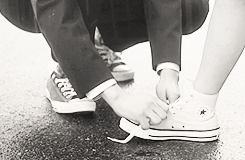
Confession
When the Devil Calls Your Name
You’re All Surrounded
I Wanna Hear Your Song
Tomorrow With You
Top 5 Actors
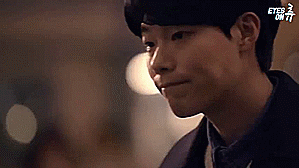
Ryu Joonyeol (Lucky Romance, Reply 1988, Believer, Heart Blackened, Money, The King)
Song Joongki (Arthdal Chronicles)
Lee Seunggi (You’re All Surrounded, Vagabond, Hwayugi)
Lee Jaewook (Extraordinary You, Search: WWW)
Jang Kiyong (Kill It, Search: WWW, Bad Guys: Reign of Chaos)
Top 5 Male Characters

Yi Bangwon from Six Flying Dragons
Ryan Gold from Her Private Life
Eunseom from Arthdal Chronicles
Kim Youngkoon from Watcher
Hwi from My Country: The New Age
Top 5 Actresses
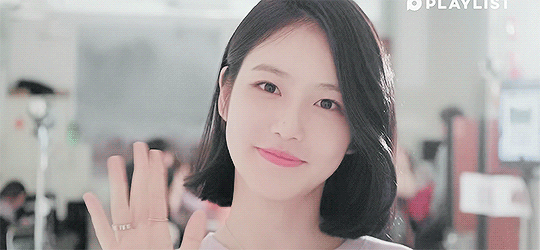
Shin Ye-eun (He Is Psychometric)
IU (Moon Lovers, Hotel Del Luna
Lee Sungkyung (Weightlifting Fairy Kim Bok Joo, Doctors,
Shin Hyesun (Angel’s Last Mission: Love)
Shin Sekyung (Rookie Historian Goo Haeryung, Six Flying Dragons)
Top 5 Female Characters
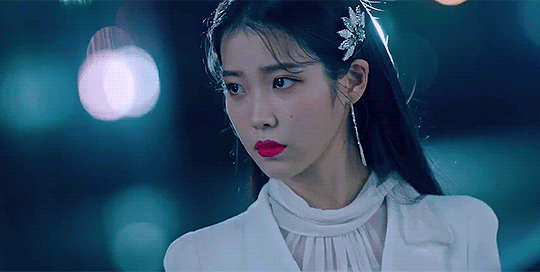
Jang Manwol from Hotel Del Luna
Han Huijae from My Country
Wen Qing from The Untamed
Tanya from Arthdal Chronicles
Yoo Soobin from Moment of Eighteen
Top 5 Couples

Yuna and Hyeonjung from Hotel Del Luna
Dan and Yeonsoo from Angel’s Last Mission: Love
An and Jaein from He Is Psychometric
Gitae and Soye from Moment of Eighteen
Soondeok and Eun from Moon Lovers--Scarlet Heart: Ryeo
A Drama I Hated
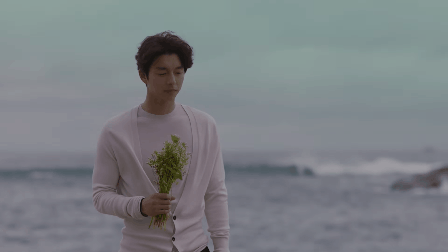
Here I don’t want to talk about a drama I necessarily disliked, but something that made me drop a fair number of dramas that I liked a lot, including The Liar and His Lover and Radio Romance (and I guess Goblin and Clean With Passion For Now, also maybe Doctors but I’m seeing if I can get over it). And that would be: age gaps. It’s something that’s made me distinctively uncomfortable, whether it’s in the drama or the actors: the fact that young girls acting with older guys. Whether that is in the actors themselves, like the 12 year age gap in Radio Romance where Kim Soohyun was literally 18 and he was 30, or in a show like The Liar and the Lover, where the girl is only ~18 and the guy is at least five years older or something. Now, I know there’s all this legal talk blah blah blah, but it’s simply a fact that made me uncomfortable, especially when watching the romance blossom on screen, so I sadly had to say goodbye to some of the dramas I had gotten a good portion into before being forced to discontinue.
A Genre I Got Into
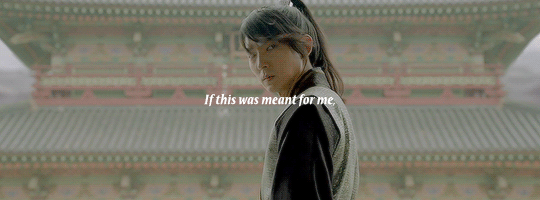
I don’t know if it was because of Arthdal Chronicles or not, but I blame the former, because ever since that drama aired, I kept watching historical dramas! This was very unusual, since I forsworn off watching historical dramas after The King in Love (which I never finished), since I disliked that they all seemed to have similar plots and greed for the throne always won. Those facts have not changed, but the only difference is now I’m watching those dramas knowing exactly why I dislike them and still watching them. I have discovered some good ones and learned quite a bit of history through them, finishing Moon Lovers and Six Flying Dragons (and, soon, Tale of Nokdu and My Country). It’s something that has bled over to Chinese dramas as well...I’m in deep.
BONUS: Chinese Drama
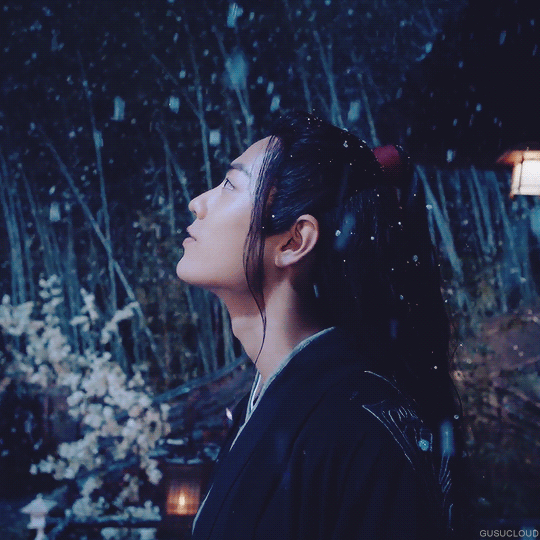
This year was the year I finished my first ever cdrama: The Untamed! I binge watched it over the summer and fell in love with the wuxia/xianxia drama. I discovered a lot of great actors as well xD. The acting and plot were seriously so amazing. I loved the morally gray characters, the villains, and the heroes all at once. It’s one of the only shows where there was no boring moment for me; even in shows I love there are always a scene or two I skip over, but nope! Not during The Untamed. I highly, highly recommend it.
BONUS: Movies
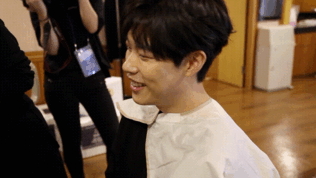
This year I tried to watch more movies (Chinese and Korean, and even a Japanese one or two)! Ones I watched include: New Trial, Juror 8, The Swindlers, and The Merciless. I also went on a Ryu Joonyeol binge over the summer where I was really into his acting for a long point, and so I watched a ton of movies he was in (listed in Top 5 Actors). I watched On My Wedding Day with my mom and sister (mixed reviews, I liked it at least) and Goodbye Summer with my friends (very mixed reviews, we were: confused). For jmovie representation, I watched Bleach and Kingdom (and unknowingly fell in love with Ryo Yoshizawa). For Chinese movies (of which I have been trying to watch more of to improve my comprehension skills, they’re still a -1), I watched The Witness, The Untamed: The Living Dead, and Jade Dynasty. I’m always looking for recs, so if anyone has any good ones, hit me up.
#kdrama#cdrama#jdrama#2019#year in review#he is psychometric#kill it#arthdal chronicles#watcher#moon lovers#weightlifting fairy kim bok joo#her private life#six flying dragons#hotel del luna#bad guys#romance is a bonus book#my strange hero#moment of eighteen#angel's last mission: love#the untamed#mad dog#only tagging ones i finished xd#ignore my word splurge#ahaha#this was gonna be longer but i ran out of ideas#hit me up!!
321 notes
·
View notes
Text
Muslim attire in the EU
This is gonna be a guide to the bans (or lack thereof) on muslim attire in the European Union, country by country. Why am I doing this? Well, I’ve seen a discussion between that you can read here about the ban on hijabs in public institutions in Belgium and France and how that’s done in the name of “secularism” (it was all brought on because of a gift-set of Yasmina from wtfok, a hijabi muslim girl in a public school from Antwerp, Belgium) .
First of all, a disclaimer. I’m in no way shape or form an expert on this, I just have way too much time on my hands and want to understand the continent I live in and its relationship to Islam a little bit better. The information on here might be inaccurate or just wrong, I’ve spent only a few hours doing research, I know it’s not enough so if you know more be free to add your own info to this.
I wanted to do a European list in general but there are A LOT of countries in Europe, so I’m limiting myself to 28, I might do the rest of countries another time, this is just to give you (us?) a general view of the continent.
I’m gonna put links to EVERYTHING so that if you wanna read the whole articles you can do so, the info there is gonna be much more specific, for I’m only doing a summary of it. Most of my links are gonna take you to articles in English, but some of them will be in Spanish, French and Italian, for those are the only languages I speak, I’d love to read the articles about Germany in German because they are usually more accurate than those in English, but I don’t speak the language, so I haven’t.
Also, even though I feel pretty comfortable and confident in English it is not my first language (nor my second), so bear that in mind, there are gonna be some spelling and grammar mistakes, I’m sorry.
First of all, what is “secularism”? There are a couple definitions of the word that change it’s meaning, but I’m gonna use the definition presented by the Cambridge Dictionary, for I think it might be the most “european” one and we are talking secularism in the European Union, so, the Cambridge Dictionary defines “secularism” as: “the belief that religion should not be involved with the ordinary social and political activities of a country”.
Having said this, I’ll tackle each country alphabetically in English (I’m including the UK because they haven’t left the Union yet). A lot of the info is gonna be based in this article. So brace yourselves:
AUSTRIA

Islam in Austria is the first minority religion. 8% of the total population declared themselves muslim in the last census.
In 2017 the Austrian Parliament banned all those items of clothing that covered the face, a law that mainly affects those muslim women who wear hijabs and niqabs.
In 2019 the Austrian Parliament passed a law banning young girls (up to 10 yo) to wear hijabs at school. The fine for going against this law goes up to 440€.
You can read more info about Islam in Austria here and about the hijab ban here.
BELGIUM

Islam is the second religion of this country after Christianity and the muslim population of the country represents the 7% of the total.
(I want to note here that the Wikipedia page in French makes close to no reference to the hijab bans in the country)
I think this is the country who’s hijab ban is making more head-lines as of late because of their last ban on hijabs in Universities (as of 2020) but the first hijab bans in schools in the country were seen in 2005.
In 2017 the European Court ruled against two niqab-wearing (I couldn’t find the right terminology, if I’m not using this right, please tell me) Belgium muslim women who’d brought their country to court saying that the ban went against Human Rights.
The fines for not upholding this laws can go up to 150€ and can result in incarceration.
You can read about Islam in Belgium in French here and in English here. If you want to know more about the recent protests I’d recommend this article and if you wanna know about the ruling of the EU Court on the face-covering ban in Belgium, you can read this article.
BULGARIA

Islam in Bulgaria is practised by 15% of the population, it’s the second biggest religion in the country after Christianity.
On 2016 the Parliament of Bulgaria passed a law banning Bulgarian citizens from wearing burqas in public spaces, those who choose to oppose it will face fines up to 770€.
I haven’t seen much about Islam and Bulgaria, but the Wikipedia article is fine (you can find it here) and I also loved this article about how the Bulgarian government benefits from this ban (it could be applied to all the countries).
CROATIA

Islam is the second largest faith in the country after Christianity, but according to a 2011 census it only represents 1.47% of the population.
I haven’t been able to find any info about bans on either face-veils (burqas, niqabs) or hijabs, but the Wikipedia article if pretty good.
CYPRUS
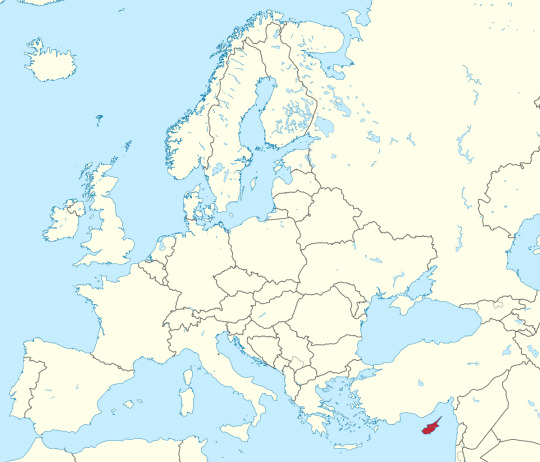
Can I just leave it at “Cyprus is complicated af”, pretty please? Okay, the thing with Cyprus, without getting too deep into International politics, is this will vary depending on what you understand by “Cyprus” because if you ask a Turk, they’ll say there are two countries in the Island, but I’m gonna make this from the European POV, so the whole island is one country (please don’t murder me).
Islam makes up 18% of the population of the country (most muslims are in the northern part of the island, the Turkish part). There are no bans on muslim attire in the country that I know of.
If you wanna know more about Islam on the country I’d recommend this article, if you wanna know about the dangers of Imperialism and what the fuck is actually going on in Cyprus, this is nice. Oh! And this article about religions in Cyprus is good as well, but it’s in Spanish.
CZECHIA

So, Czechia (why is it spelled like this? why? I’ve had to check it over and over again!) so… Not much to say about this country (other than the fact that Prague might be my favourite city ever). Muslims only account for 0.1% of the population and I couldn’t find any bans whatsoever.
Oh! And its political leaders have proposed a ban on Islam itself, which isn’t Islamophobic at all!!! (according to their wonderful president refugees are colonizers, I love my continent :))
Okay, if you wanna read more about the whole Islam ban, this is a wonderful article to do so. And if you wanna know about Islam in the country in general, well, this isn’t the best Wikipedia article in the whole world, but it’s nice enough.
(I know my sarcasm is starting to show, I’m tired and I’ve only done 5 out of the 28 countries.)
DENMARK

And we’re finally here! The country with the little island for their muslim migrants!
Okay, joking aside, the muslim population of this country accounts for 5.4% of the total.
In 2005 the Parliament passed a law allowing businesses to ban women from wearing hijabs and on 2009 judges and jurors were forbidden to wear religious symbols. Some schools ban the use of head-scarfs. The fine for refusing to do so is of 1000 konner or 140 €. On 2018 they passed a law banning garments that cover the face.
This article is good for general information. And, if you want to know about the island, this article is good.
ESTONIA
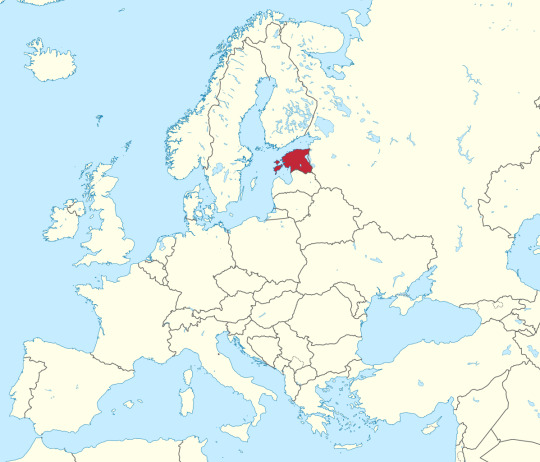
Estonia has a very, very, very small Islamic community (0.1% of the total) and there’s not even one (1) Mosque in the country, although they practice in a Muslim Community centre.
Sorry I couldn’t find more info, you can read this, but it isn’t much.
FINLAND

Finland, 2.7% of the country’s population is Muslim. And… That’s all I could find? I’m sorry, really, if you want more info I can throw in the fact that “The Baltic Tatars” are a thing and they sound super cool.
Here’s the article.
FRANCE

Oh, France, the first country that used secularism to hide islamophobia, the land of Moliere, Champagne, my favourite cheese, Simone de Beauvoire… And the birthplace of the European hijab ban.
Okay, so things didn’t happen over night, in 1989 the French Minister of Education stated that it was up to the educators to accept or refuse the use of head-scarfs in their classrooms. In 2004 the French government banned religious symbols in schools and public places altogether (something that somehow only affects muslim women).
In 2010 dresses that covered ones face were banned (something that, again, mainly affect muslim women).
In 2016 there were very strong attempts to ban burkinis that were overthrown.
Oh! Muslims account for 8.8% of the total population in France.
To read more about Islam in France this article is good. And I’ve loved this article about the hijab in France. If you want something in French you can read this.
GERMANY

Muslims in Germany account for over 11.6% of the total population of the country.
In 2017 the government passed a law banning the covering of the face for soldiers and state-workers during work hours.
This article is great to get a superficial view about Islam in Germany.
GREECE

Muslims in Greece account for 4.7% of the population, I haven’t found much else other than the fact that there are two distinct groups, those who have been there since the Ottoman Empire and those who came in the late 20th century, early 21st.
I really liked this article, it’s not wikipedia.
HUNGARY

Muslims in Hungary make for less than 0.1% of the population. I haven’t found any information on bans on veils, but the country right now is ruled by the far-right and they won’t take any refugees (I know not all refugees identify as muslim but, believe me, in Europe everyone views them as muslim).
I got the info from this article, but I liked this article on Islam in Hungary much better, it just didn’t have the info I was looking for.
IRELAND

Ireland has a muslim population of 0.9% of the total of the country. Ireland is a fun country to do on this list because of the declaration from their Prime Minister, Leo Varadkar, in 2018, about weather to ban veils or not, stating: “I don’t like it but I think people are entitled to wear what they want to wear. […] I believe in the freedom of religion. I don’t agree with the doctrine of every religion or necessarily any religion, but I do believe in the freedom of religion.”
You can read more about Ireland and Islam in this article.
ITALY
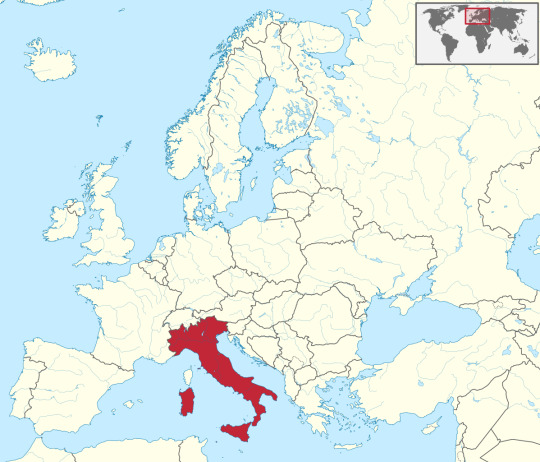
Muslims in Italy represent 2.3% of the total population, in 2015, Lombardy (a region in northern Italy) banned the use of burqas in hospitals and local governament buildings. Anyway, this article gives you a pretty good overview on Islam in Italy and this one on the Lombardy burqa ban.
LATVIA
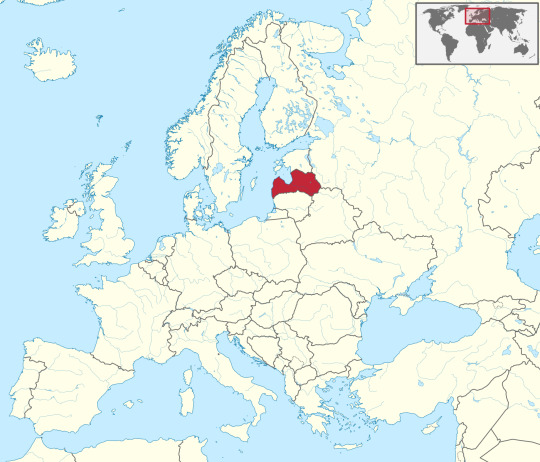
Muslims make up around 1% of the population in the country, I couldn’t find anything about bans on veils in the country, or Islam in general, but this article is an overview and this one talks about the experience of a muslim man in Latvia.
LITHUANIA

The only thing I’ve been able to find is that Lithuanian Tatars make for 0.1% of the population, but I couldn’t find anything about other Islamic families living in the country. You can read more on Islam’s history in the country in this article.
LUXEMBURG

The muslim population in Luxembourg accounts for 0.02% of the total population of the country, as fas as I know, there are no bans on veils, either hijabs or face-veils. So… Yeah, here’s a link, I couldn’t find much info on Islam in the country.
MALTA

Malta’s muslim community represents less than 1% of the country’s population.
In Malta, muslim women have to remove their veil when taking identification photos, but other than that, they can wear whatever they want, even though there was a proposal to ban burqas and niqabs in 2015, it was overthrown.
I couldn’t find much about Islam in Malta, mainly this article and this one about the proposal to ban full face veils.
NETHERLANDS
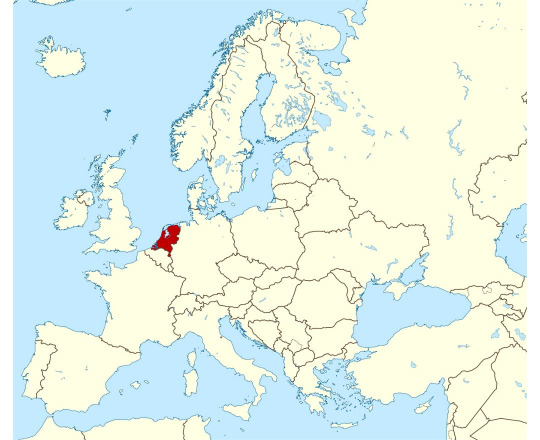
5% of the population in the Netherlands practice Islam according to a 2018 census.
In 2019 the Netherlands passed a law banning the use of burqas and niqabs, but not without controversy, Amsterdam’s mayor has opposed the law since the beginning and the actual enforcement of such law is in question.
You can read more about the history of Islam in the Netherlands in this article and about the ban on burqas in this one.
POLAND
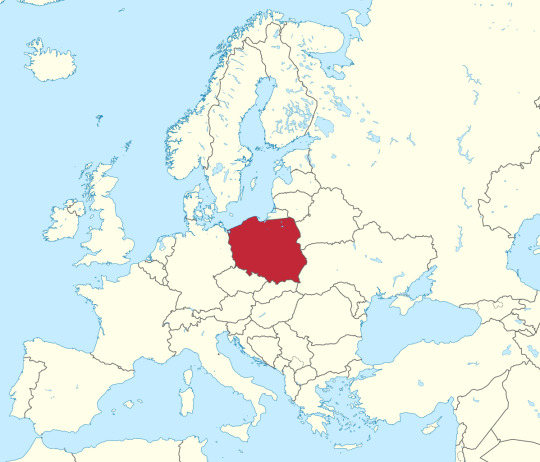
Today, less than 0.1% of the population of this country declares themselves as muslim, but it’s one of the most Islamophobic countries in the continent, although I haven’t been able to find any bans on veils, probably because the majority of muslims are Lipka Tatars and the women of that group traditionally don’t wear hijab.
You can read more about this in this article.
PORTUGAL
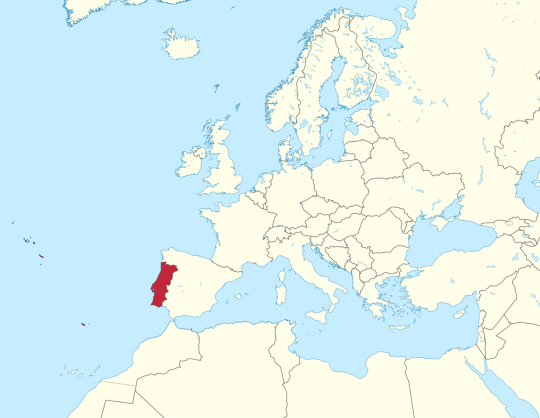
The muslim population of Portugal represents less than 1% of the total, I haven’t been able to find any info on veil bans, but I got everything from this article.
ROMANIA

Muslims in Romania make up for the 0.3% of the population. As far as I’ve seen, there are no bans on veils in this country.
You can read more about Islam in Romania here.
SLOVAKIA
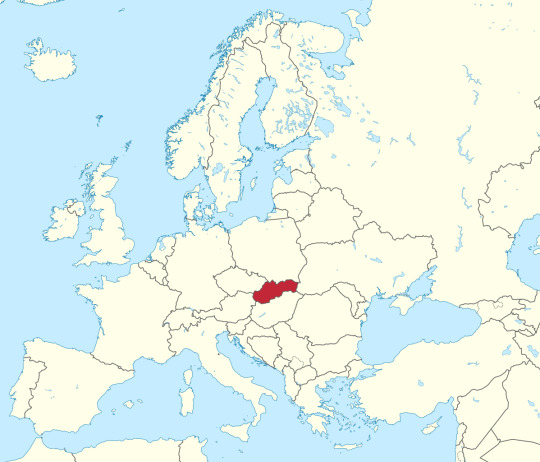
Less than 0.1% of the country’s population practice Islam and the country does not have a mosque. I haven’t been able to find anything about veil bans in the country, but they did ban Islam from becoming an official religion on 2016 and mosques in general (people worship in the Islamic Centre of Cordoba).
This is what I’ve been able to find about Islam in the country, this article is about the ban on mosques.
SLOVENIA

Muslims make up about 2.4% of the country’s population. I couldn’t find much else, and nothing on bans on veils. I got my info from this article.
SPAIN

Islam is practised in Spain by 4.5% of the country’s population.
Some cities in the country (such as Barcelona, Tarragona and Lleida) have banned the use of burqas and niqabs since 2010 and, although the Senat has pressured the government to do so nation-wide, their proposal didn’t pass the Parliament nor the Government itself, no no action has been taken.
(Also, I’ve seen people in both burqas and niqabs in Barcelona, so I don’t know if the law is being applied)
Finding info on Islam in Spain is tricky because most articles talk about the 12th century and things like that, but this one in Spanish is pretty good.
SWEDEN

Sweden’s muslim population makes up for 8.1% of the total. In 2019 a few municipalities banned the use of the hijab in educational institutions.
You can read more about all of this here.
UNITED KINGDOM
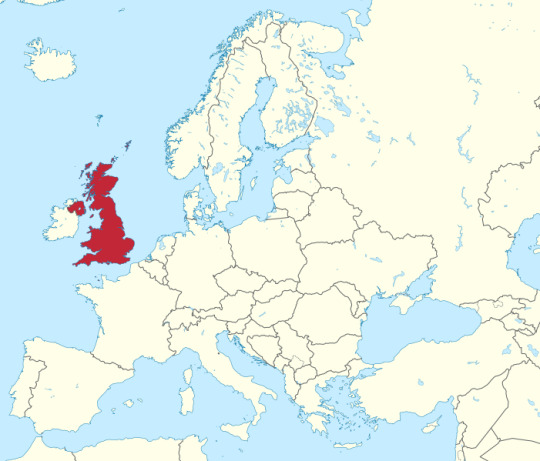
Muslims represent 4.4% of the total population in the UK and there’s no law banning islamic dress.
You can read more about this here.
THE EUROPEAN UNION AND ITS VALUES

I know many defend the banning of such items of clothing stating that secularism is a European value, so I took the liberty of going into the EU official site and look up its values (you can find it all here). This are the values of the EU:
Human dignity
Freedom (yeah, freedom of religion and expression are included within the EU’s definition of freedom)
Democracy
Equality
Rule of law
Human Rights (again the right to be free of discrimination because of religion is here)
So, no “secularism” isn’t a European value, freedom of expression and of religion and faith are. So, although the EU has ruled in favour of this bans multiple times, those are not upholding European Values.
Also, I’ve been very careful to put the years all this bans have been approved because, if you look closely, you’ll see that these bans are the outcome of the Islamophobia, xenophobia and radicalism that has taken Europe (and the west) by storm after 9/11 and the Mediterranean Migratory Crisis.
OTHER RANDOM THINGS I’VE SEEN, LIKED BUT DON’T KNOW HOW TO WORK INTO THIS LONG ASS POST
I really liked this article about how Europe banned veils and now face-masks are mandatory in most places.
This article also touches on Turkey, Russia and other European countries.
I love this article about how wearing a hijab in a lot of places of Europe has become a symbol of resistance.
A LITTLE NOTE FROM ME TO YOU
If you have gotten this far, I’m honestly surprised, I did this more for myself than others, but I really wanted to share it once it was done. Hope you’ve enjoyed it and learned something from it. I love you all 💜
22 notes
·
View notes
Text
40. DENMARK
Ben & Tan - “Yes”
youtube
I think this post is bleeding ‘Yes’ to death Lemme shoot an arrow through its chest I’m so in loathe I must surpress THIS MESS THIS MESS THIS MESS.
Song analysis
Another thing why Negaworld Estonia deserves hate: I was forced to rank them below Denmark!! but like Uku, this ranking is mostly personal.
What can I even say beyond the same gospel I’ve been preaching for years? Every year Denmark pulls the same I Can’t Believe It’s Not Sweden bullshit. Every year the only road they follow is the one of least resistance. They are terrified of anything with even an ounce of originality. It’s a broken record by now and I can’t say I’m impressed. Oh a bad Of Monsters And Men clone, forgive me for not getting my knickers into a twist. Having said that, I don’t exactly feel a BURNING hatred for *De* and *Mon* like I usually feel for my least favourites - In fact, after the cancellation it’s hard to feel anything - but I think it may be in part because I’m always partial towards cheerful songs with deceptively dark messages? “I AM READY TO GIVE LIFE ONE MORE CHANCE” say “YES” to sex, the best anti-depressant in the world, yall.

YAY SEX YAY SEX YAY SEX
The problem is: I don’t buy it. I do not believe a *SINGLE* letter of this song. Depressing/Volatile lyrics (I’m astounded nobody has thought to parodying it yet by juxtaposing “Yes” to like, the hilariously graphic deaths in found in GoT and the Witcher - Get at it!!) + cheerful vibe WORKS if presented as satire or irony, but in a more earnest setting the artifice just leaks from every pore. Anyone who is *THIS* possessive and overdramatic towards their loved one is either mentally unstable or a liar or a mentally unstable liar.
Secondly, the pair of Ben and Tan. Look, I am aware they are friends who met on some Idol show or whatever, but Tan is 23 and Ben is 17. I swear I’m not a puritan but is this... kosher? Even if we assume for a second their narrative relationship is platonic (which it sure as hell isn’t presented as), it’s still a stretch. Let me put it this way, if it were a 17 year old girl and a 23 year old man singing *those* lyrics I doubt most people would be as okay with it.
Also, I’ve read that people believe that TAN was the weak link in the pair for God/Drug knows what reason (sexism) and I completely disagree. Tan is good and carries the song. Ben on the other hand completely undermines any credibility “Yes” could have by... well, I mean, have a look yourself:

Ben’s already past the Lucie Jones Zone of facial errors, and solidly encroaching towards the fluid nightmare that was Demyface. I feel bad having to trashtalk another Danish young person so soon after the world’s oldest twenty year old Leonora, but when there’s a genuine risk of a contestant morphing into John Carpenter’s The Thing, I ain’t gonna take no chances.
NF Corner
Hey, guess what, DMGP was... acceptable this year! It was... well, not *good* because Of Monsters And Men weren’t the only good act to have a *SHITTY* clone but I did love the dystopian pathos of not having an audience, and DR having to resort to hilariously fake cheer and applause stock footage to create some sort of vibe <3
and also, there were two very good songs in the line-up, which is more than what EL had, here they are:
Maja & De Sarte Sjæle - “Den eneste goth i Vejle”
youtube
A running theme in this NF season was the abundance of lovable indie entries that would normally ONLY find a place in Eesti Laul, popping up in every NF *other* than Eesti Laul. This was the Danish one. Indie rock song about growing up to be the only goth in some rural, puritan Danish village, wearing a Meat-is-Murder, BETCH, is a good way to start. Shamelessly namedropping 70s rock bands they are pilfering riffs from <3 My main gripe was the staging. You’re talking about goths, so why are your clothes and backdrop inspired by some thriftstore flowerpower movement? Anyway, wow a duo with more chemistry than De & Mon, can you believe it? I do, because they lost DMGP. 😈 (by finishing 4th in the vote allegedly. BRING THEM BACK!!!)
Jasmin Rose & Roxorloops - “Human”
youtube
Okay, I am aware that I JUST shaded Denmark about shamelessly cloning anything that sings, but “Human” is literally a techno-ethnodance remix of Lorena’s “Tower of Babylon” and it’s SO blatant I fell out of my chair laughing the first time I heard it. And then, I had yet to deal with the hilarity of ROXORLOOPS possibly becoming the most random returnee of all times (forget Witloof Bay, Roxorloops was ALSO in the 2006 Belgian NF, where his group not only finished LAST in their heat, but also received the lowest score from ALL jurors and the audience <33333). He is SO redundant he is barely even featured in the studio track <33333 And then we got to the live of “Human” staged as an OTT Rose/Robot dichotomy, with Roxorloops of course playing the part of the ROBOT being more of a dancer than a beatboxer holy fuck this was a hilarious ride. IS THIS DENMARK I FUCKING CANNOT BELIEVE IT. Oh wait, "Human” didn’t make the top 3 YUP sounds like Denmark alright. 😈 BRING THEM BACK AS WELL!!!
Denmark 2020 vs Denmark 2021
There is currently no information published about Denmark’s plans in 2021, but I assume they will just hold DMGP again, with an invite for Ben & Tan (which seems to be the MO for countries that traditionally hold NFs). I am however happy that “Yes” was neutered though. 😇 I don’t think it could’ve won, but its fake-cheerfulness would’ve ensnared a good chunk of casual votes and I’d rather NOT see Denmark KEiiNO themselves into a top 10 they do not deserve! Crisis averted!

FREAKY! FRIDAY! FACTOR!
I mean, even with several legit good songs in their DMGP, it was always blatantly obvious Denmark would select “Yes”. After all, it was the only Swedish song in the running.
Score: 0 Senhits out of 5

17 notes
·
View notes
Text
Kathryn Marie Morse, 20 (USA 1972)
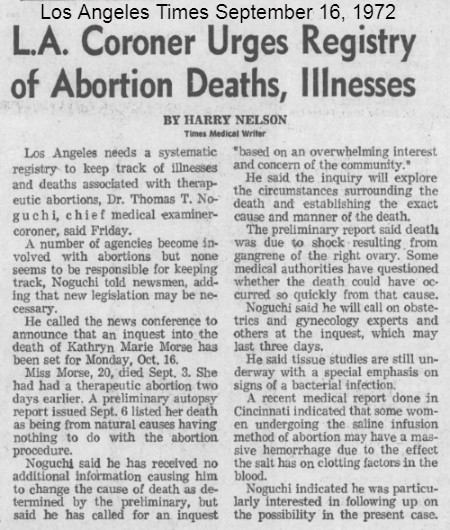
When California legalized abortion in 1970, a company in Texas exploited the tragedy through “abortion tourism”—selling referrals and transportation to California abortion facilities. This exploitative business resulted in the deaths of many young Texans, including Kathryn Marie Morse and her child.
Kathryn was only 20 when was admitted to Bel Air Memorial Hospital on September 1, 1972 for a saline abortion. Abortionist Morton W. Barke started the saline abortion at 4:00 P.M. (Please note that almost any legal abortion in California was classified under the law as “therapeutic” no matter how healthy the client was.)
Kathryn’s temperature skyrocketed to 102 degrees. Just after midnight on September 3, she went into labor and had her dead baby, who was covered in burns. Kathryn’s blood pressure rose dramatically and she went into shock. At 9:40 A.M. she was pronounced dead.
The autopsy of Kathryn Morse found sepsis and gangrene. The “safe and legal” abortion caused two deadly infections that killed Kathryn in an excruciating way. A pathologist named Dr. F. Rene Modglin was struck by the negligent treatment, noting that the hospital barely tried to find out why Kathryn had symptoms of shock. A doctor had suspected infection at some point and ordered antibiotics, but no lab tests were ordered to ensure that the most effective antibiotic for the situation was being used.
A jury voted on Kathryn’s cause of death. Nobody had any doubt that the abortion directly killed her. The jury was supposed to determine if the death should be categorized as an accident or negligence.
The coroner’s jury was split. 5 jurors held that Kathryn's death was accidental, “the unintended or unexpected results of human conduct.” while 4 jurors held that Kathryn's death was "at the hand of another person, other than by accident." All of the jurors recommended that the coroner look more closely into the circumstances of not only Kathryn's death but of all the legal abortion deaths that were seen in Los Angeles County. After all, there were so many of them.
“L.A. Coroner Urges Registry of Abortion Deaths, Illnesses” Los Angeles Times, September 16, 1972

“Split Verdict in Abortion Death Returned at Coroner's Inquest” Los Angeles Times, November 11, 1972
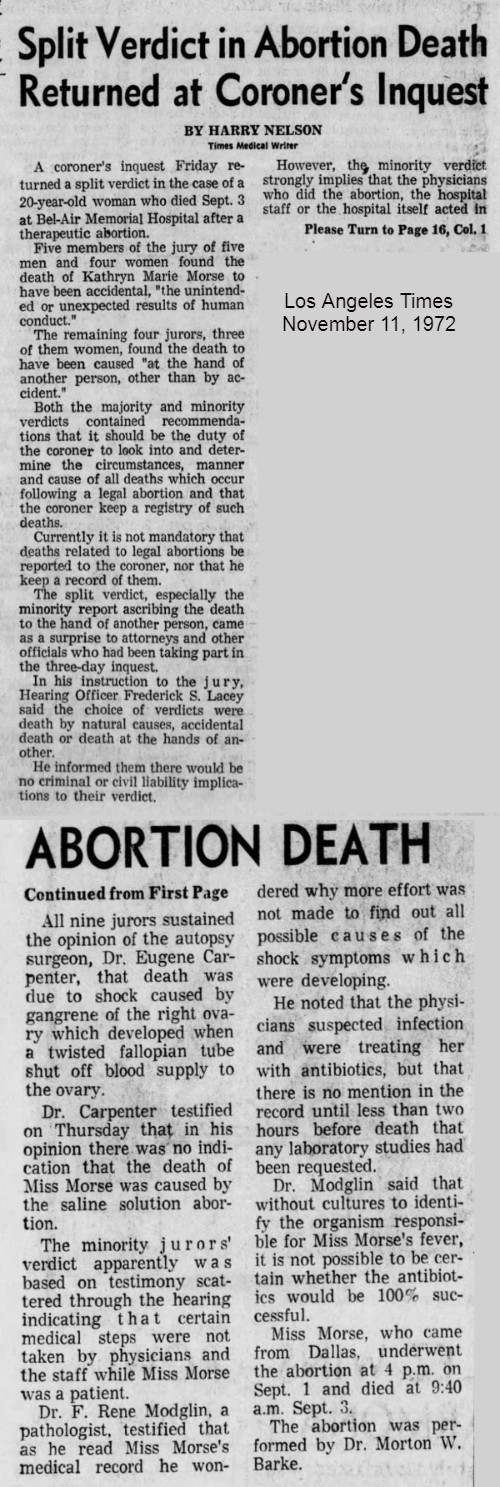
“Inquest Ordered in L.A. Abortion Death” Los Angeles Times, November 16, 1972

“Girl's Post-Abortion Death Ruled Accident” Los Angeles Times, December 21, 1987
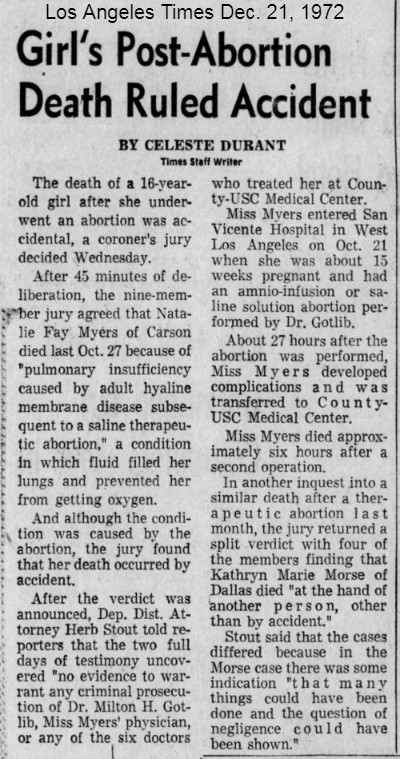
#unsafe yet legal#pro life#death from legal abortion#tw abortion#pre roe legal#tw ab*rtion#tw murder
14 notes
·
View notes